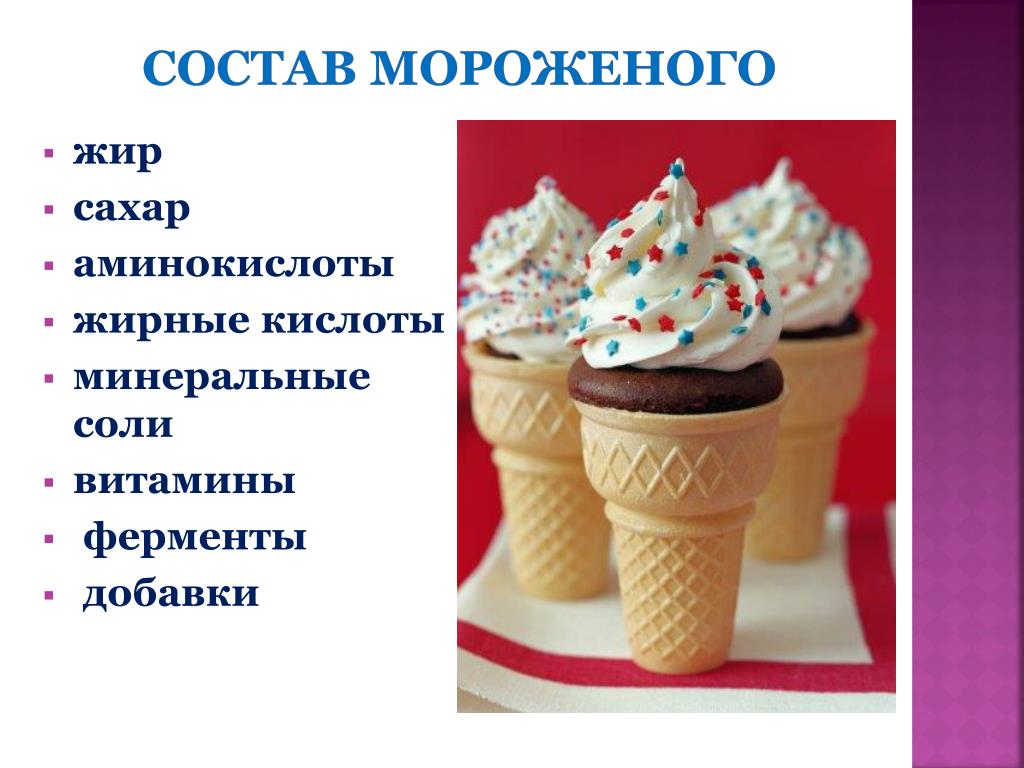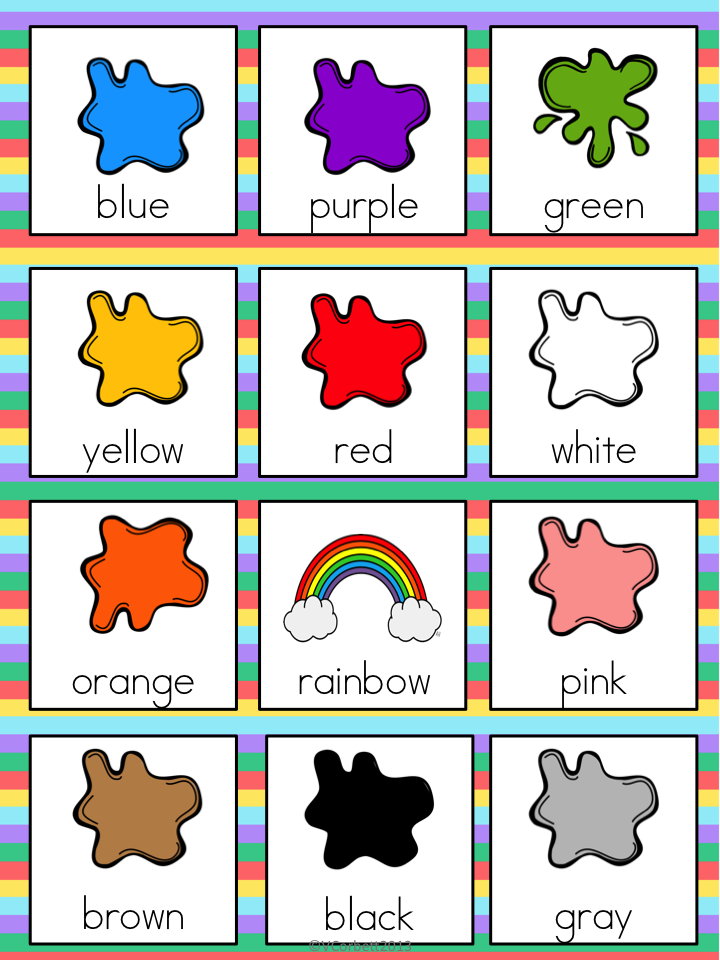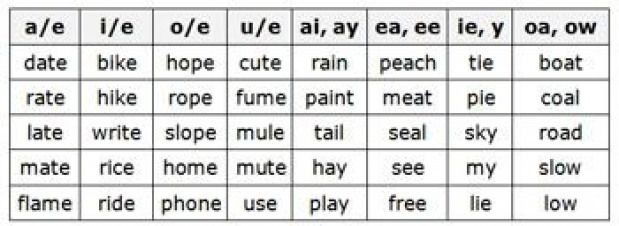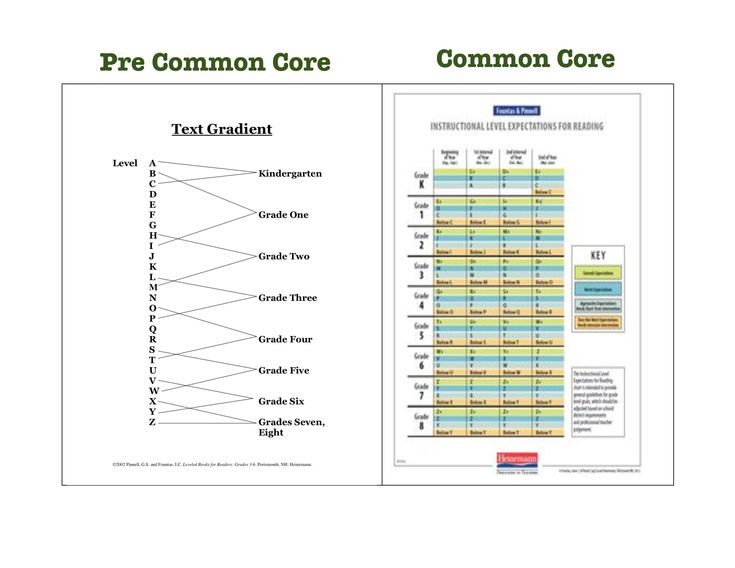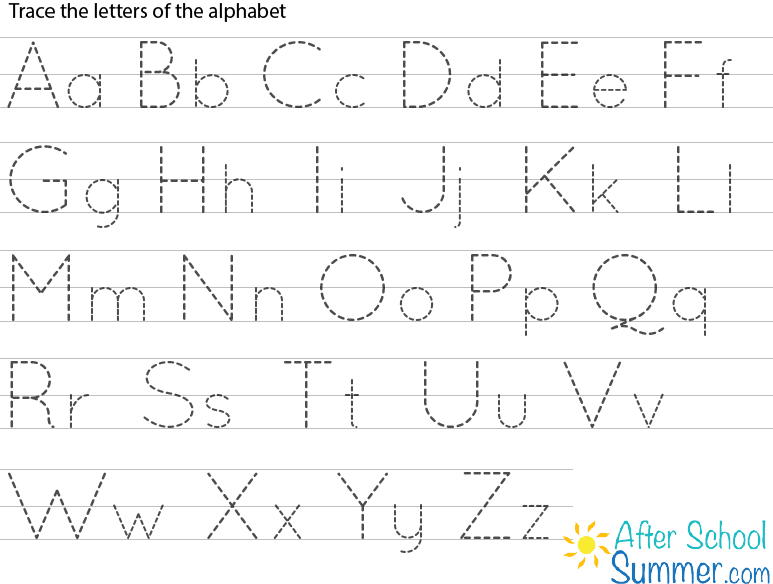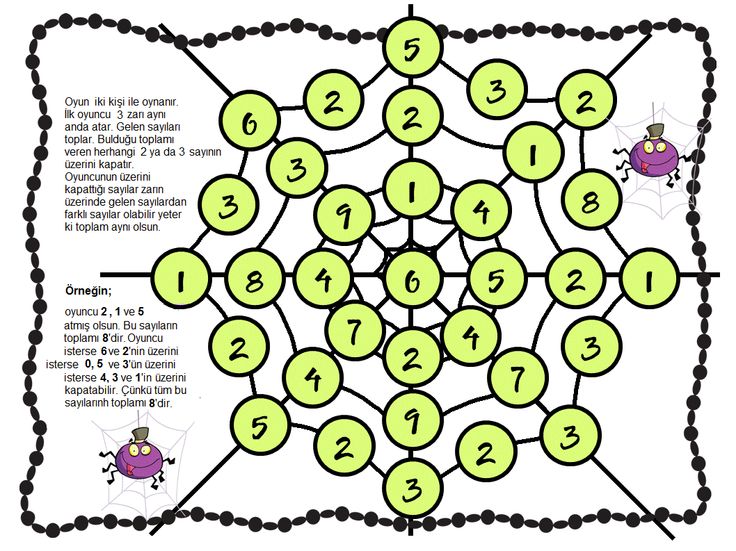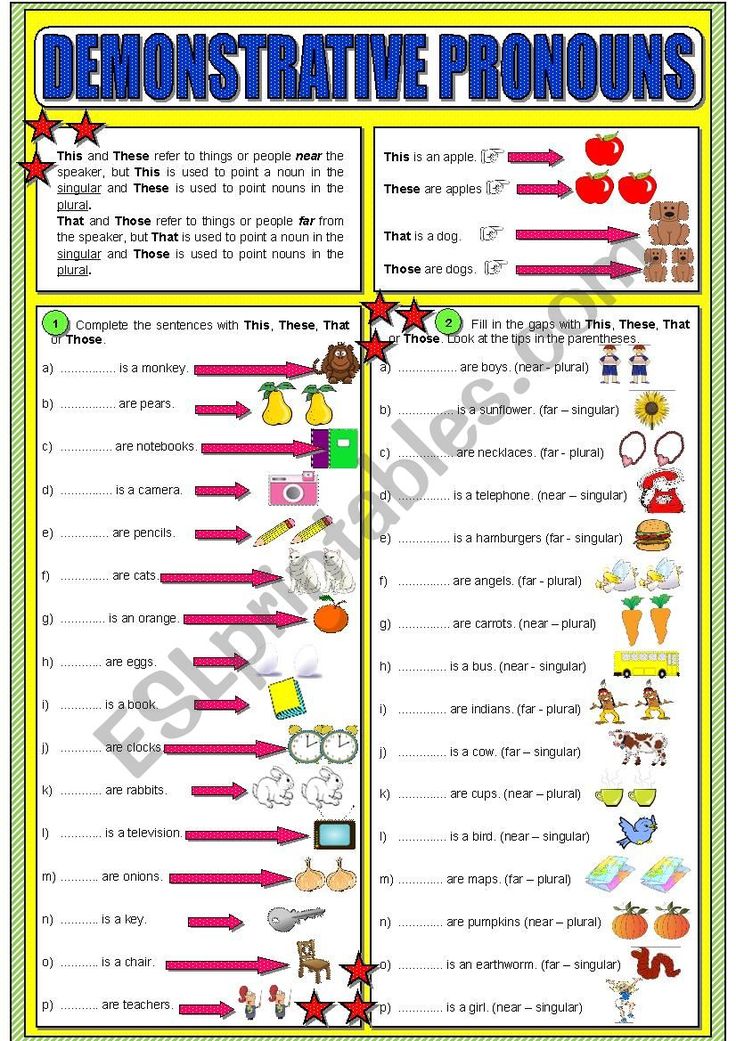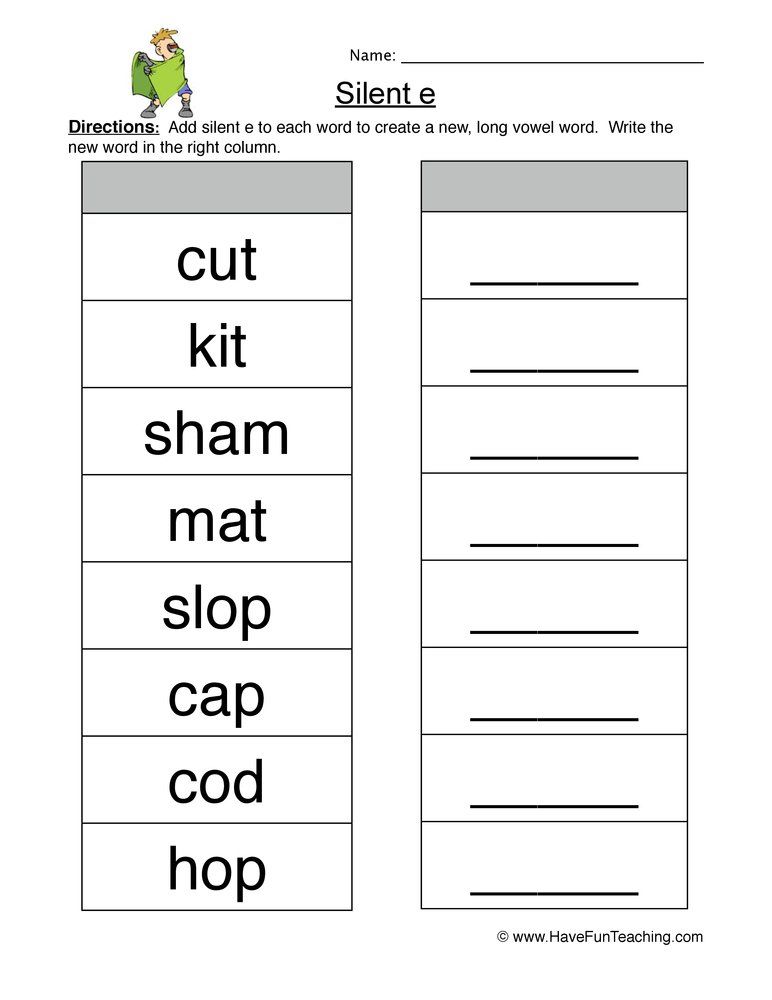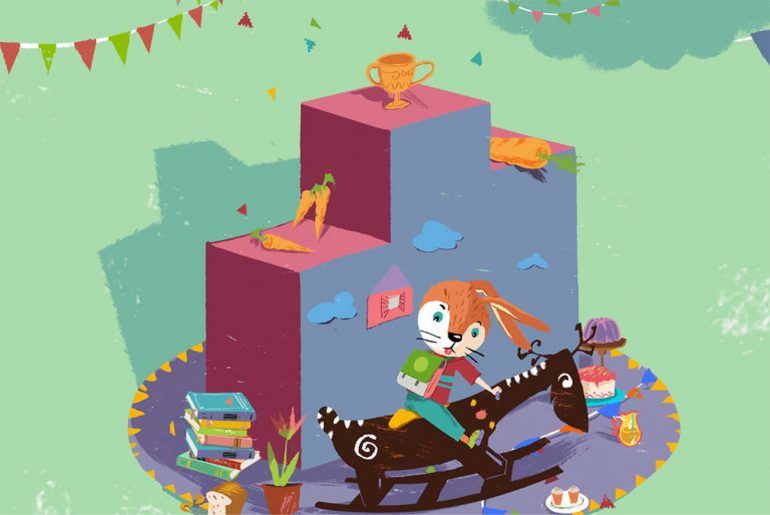Best activities for 5 year olds
101 awesome activities for kids ages 5 to 8
These activities for 5-year-olds and older are perfect for staving off boredom.
Do you struggle with thinking of fun activities to keep your child entertained on the weekends and after school? You’re not alone! It can certainly be difficult to come up with unique activities for kids. And although it might be easy to just pop in a movie or allow your little one to play games on the tablet, psychologist and play expert Dr. Jacqueline Chinappi, of South University in Savannah, Georgia, urges you to remember that too much screen time can contribute to behavioral problems, obesity and attention issues.
In today’s digital world, this is a growing concern. In fact, according to Dr. Anne Fishel, of the Department of Psychiatry at Massachusetts General Hospital in Boston, children around 8 years old at times have up to 11 hours of screen time per day.
Help your little one exercise their mind and body by trying out these 101 fun activities for 5- to 8-year-olds.
- Make a batch of homemade play dough.
- Go on a nature walk and collect leaves or rocks.
- Move the furniture around so your little gymnast can practice their tumbles.
- Play “Go Fish.”
- Make a fort out of blankets and pillows.
- Plant flowers in the garden.
- Camp out in the backyard.
- Read a classic children’s book out loud together.
- Learn to ride a bike.
- Go berry picking.
- Bake a pie using your freshly picked berries.
- Grab some binoculars and go birdwatching.
- Learn how to play the recorder.
- Make sock puppets.
- Press flowers and put them in a scrapbook.
- Build a model airplane.
- Learn how to knit.
- Visit your local zoo.
- Visit a farmers’ market.
- Play dress-up.
- Learn how to braid hair.
- Grab some chalk and decorate the sidewalk.
- Have an outdoor picnic.
- Observe insects through a magnifying glass.
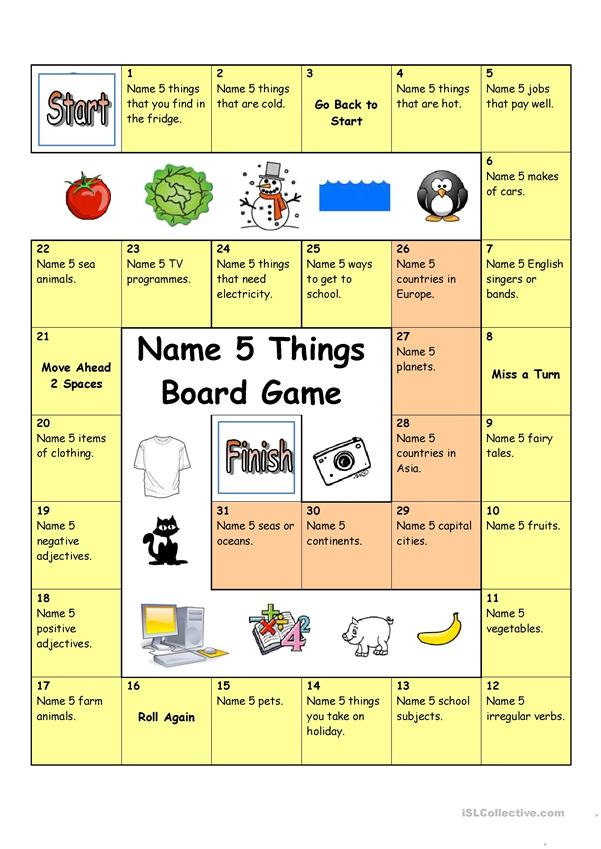
- Is it raining? Have a picnic indoors instead!
- Visit animals at a pet store. (Just try not to bring them all home!)
- Make a map of your house or apartment.
- Learn how to jump rope.
- Make a guitar out of a box and rubber bands.
- Visit your neighbors.
- Bake brownies.
- Pop some popcorn, and snuggle up to watch some home movies.
- Plant a vegetable garden.
- Build a snowman.
- Have a snowball fight.
- Make a pizza with all your favorite toppings.
- Visit a pumpkin patch.
- Make friendship bracelets.
- Turn a pine cone into a bird feeder by adding some peanut butter and birdseed.
- Learn a magic trick.
- Cut out homemade paper dolls.
- Play freeze tag.
- Play “Simon Says.”
- Interview a grandparent.
- Get out a bag of hair ties and create some fun hairdos.
- Go to the library.
- Go on a hike.

- Build a sandcastle.
- Have a tea party with real tea and snacks.
- Cut out pictures from magazines to make a collage.
- Play “Red Light/Green Light.”
- Color!
- Write an original song.
- Take turns drawing each other’s portraits.
- Paint each other’s fingernails.
- Play “Hide-and-Seek.”
- Teach your dog or cat how to do some tricks.
- Make your own bubble solution.
- Lay out an ice cream sundae bar.
- Play “Follow the Leader.”
- Tie-dye T-shirts.
- Have a fashion show.
- Feed ducks at a local pond or lake.
- Make shadow puppets on the wall.
- Play a board game.
- Turn craft foam into bath floats.
- Make pinch pots out of air-dry clay.
- Slice apples and turn them into paint stamps.
- Turn your living room into a winter wonderland with toilet paper, cotton balls and pillows.
- Break out your makeup and let your child give you a new look.
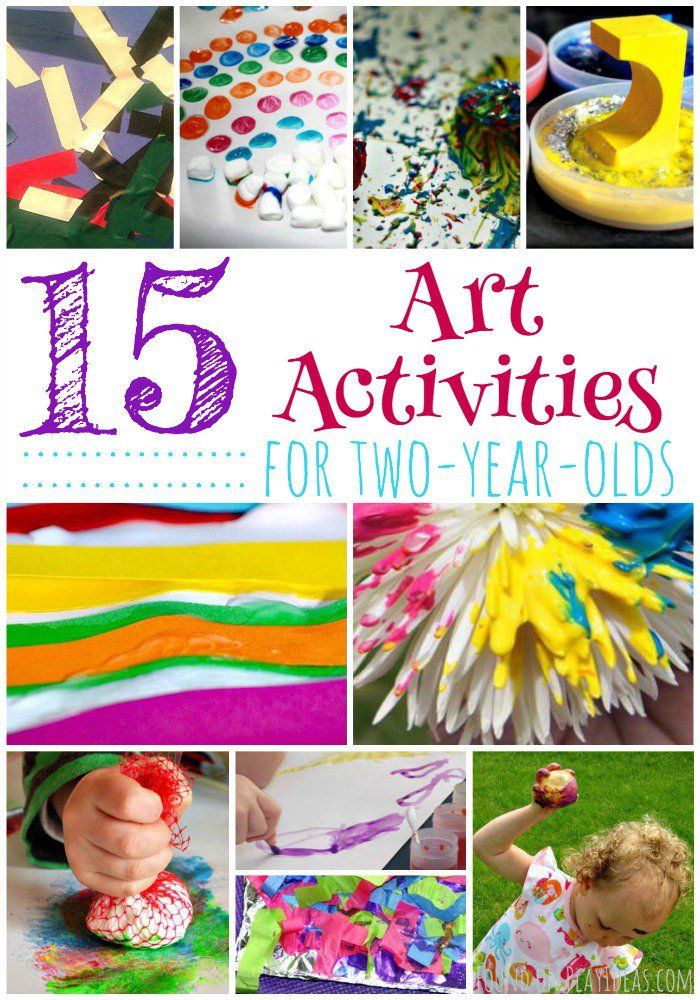
- Put on a play.
- Do a word search.
- Visit a local farm.
- Run through a sprinkler.
- Make nature crafts.
- Learn how to hula hoop.
- Make muffin tin crayons.
- Cut snowflakes out of paper.
- Play mini golf.
- Make hot chocolate.
- Lie down in your backyard, and talk about the shapes you see in the clouds.
- Create a secret handshake.
- Go fishing.
- Put together a puzzle.
- Play musical chairs.
- Learn how to do a cartwheel.
- Make rainbow foam.
- Create a paper chain with colorful construction paper.
- Learn how to play checkers.
- Make a drum out of an oatmeal container.
- Visit a science museum.
- Learn a new language.
- Make leaf and tree rubbings with paper and crayons.
- Catch fireflies.
- Go for a drive with no destination.
- Make a sundial out of paper plates.
- Play “Duck, Duck, Goose.
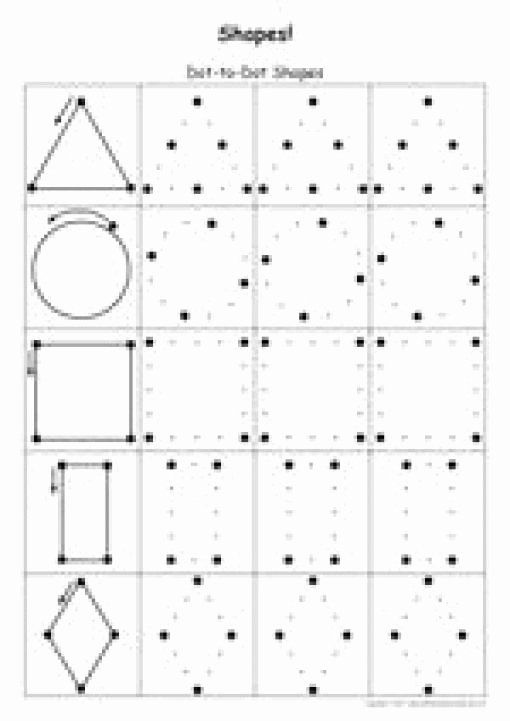 ”
” - Build a dream house out of Legos.
- Have your child write a letter to her favorite book character.
- Do a crossword puzzle.
- Find rocks outside and paint them.
Like what you're reading?
Join Care for FREE
EmailEmail is required.
Click 'Next' to start an account and get tips, tricks and trending stories.
Already Registered
The email address you entered is already registered. Would you like to log in?
Log in
Almost done!
Join Care for FREE
Create a free account to access our nation wide network of background checked caregivers.
First name
First name is required.
Last name
Last name is required.
Zip codeZip code is required.
We're sorry, your request could not be processed at this time.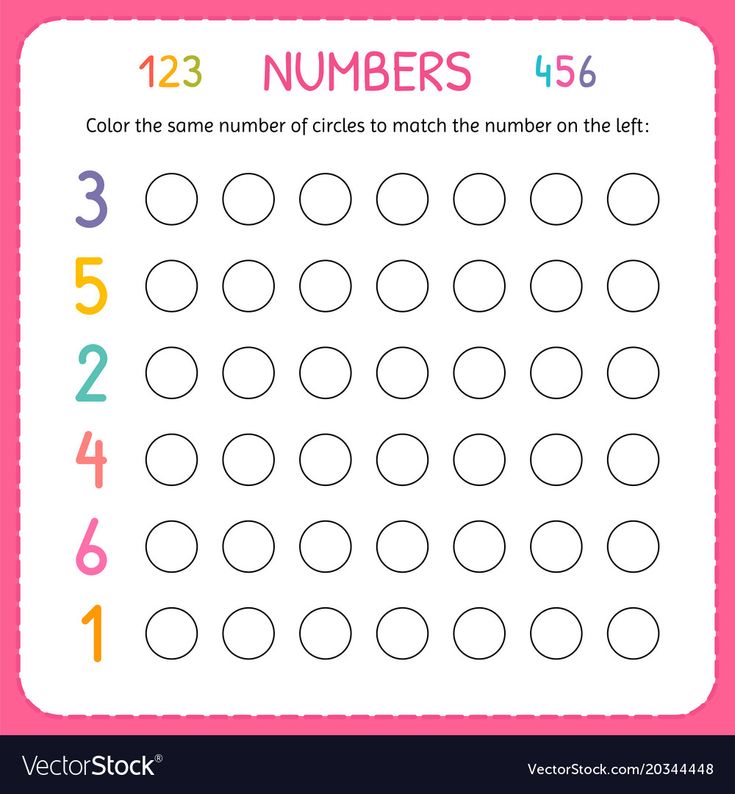 Please click here to try again.
Please click here to try again.
By clicking "Join now," you agree to our Terms of Use and Privacy Policy.
Welcome to Care!
You're on your way to finding someone your family will love.
Start now
25 Engaging Activities For 5-Year-Olds
When I think about five-year-olds, I think about the world of imagination and endlessly learning possibilities- where the impossible is possible, and there are no limits and boundaries. Five-year-olds are eager to learn, help, and do. They are on the go from morning till night, so they need plenty of short activities to keep them entertained. We’ve compiled a list of 25 engaging activities, so dive right in and remember to have fun!
1. Play With Your FoodKids are always told, “Don’t play with your food.” Well, in this activity, we are going to do just that! Ever heard of Rainbow Toast? Children will have edible paint and some toast and can let their imaginations go wild as they paint a rainbow.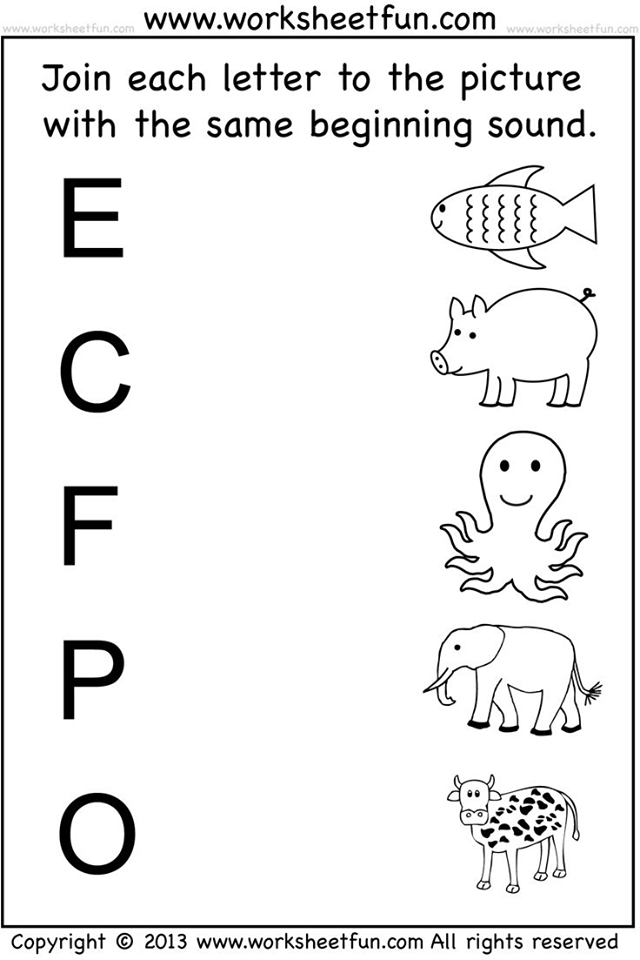 Afterward, they can enjoy an edible treat!
Afterward, they can enjoy an edible treat!
Learn More: Holley Grainger
2. Cookie MergerHundreds of years ago, Othello was first played with black and white stones in Japan. The game’s object is to enclose the opposite color so it can be flipped over. This time we are using black and white sandwich cookies in a fast-paced game with a twist.
Learn More: Kids Activities Blog
3. Got Cups?Plastic cups can be so much fun if you know what to do with them. Cup activities go far beyond just stacking them up. From bowling, ping pong, sorting, or drawing, plastic cup activities win hands down. Kids have big red plastic cups and small squares of construction paper, and the aim is to try and build the tallest tower.
Learn More: Pickle Bums
4. Egg Carton PlantingLittle ones like the experience and idea of gardening, but many do not like all the hassle it entails. Children can have lots of fun in the classroom with egg carton plants.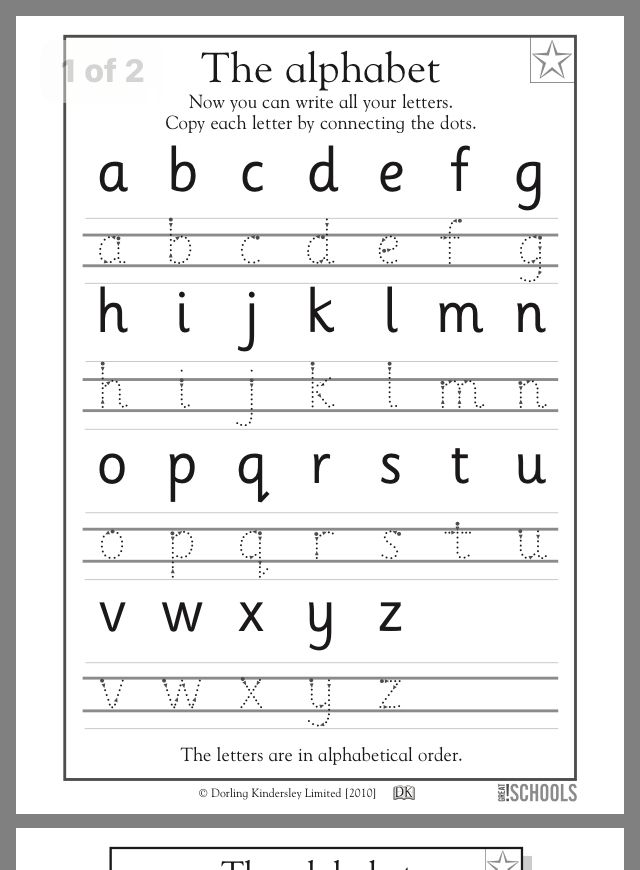 They can simply fill a carton with soil, plant the seed, water it, and watch it grow.
They can simply fill a carton with soil, plant the seed, water it, and watch it grow.
Learn More: Revolution Foods
5. Ants Go MarchingAnts are so interesting to learn about, and with this fantastic craft, children can make their own red and black ants out of spoons! Connect assorted spoons and paint them red or black. Glue on some googly eyes and pipe cleaner legs, and your ants are ready for marching!
Learn More: Danielle’s Place
6. Junk In Your TrunkThis game takes a little bit of investment, but it is well worth it. All you need is some tissue boxes, ping pong balls, and a few other odds and ends. The game’s objective is to get all the balls out of the tissue box as fast as possible.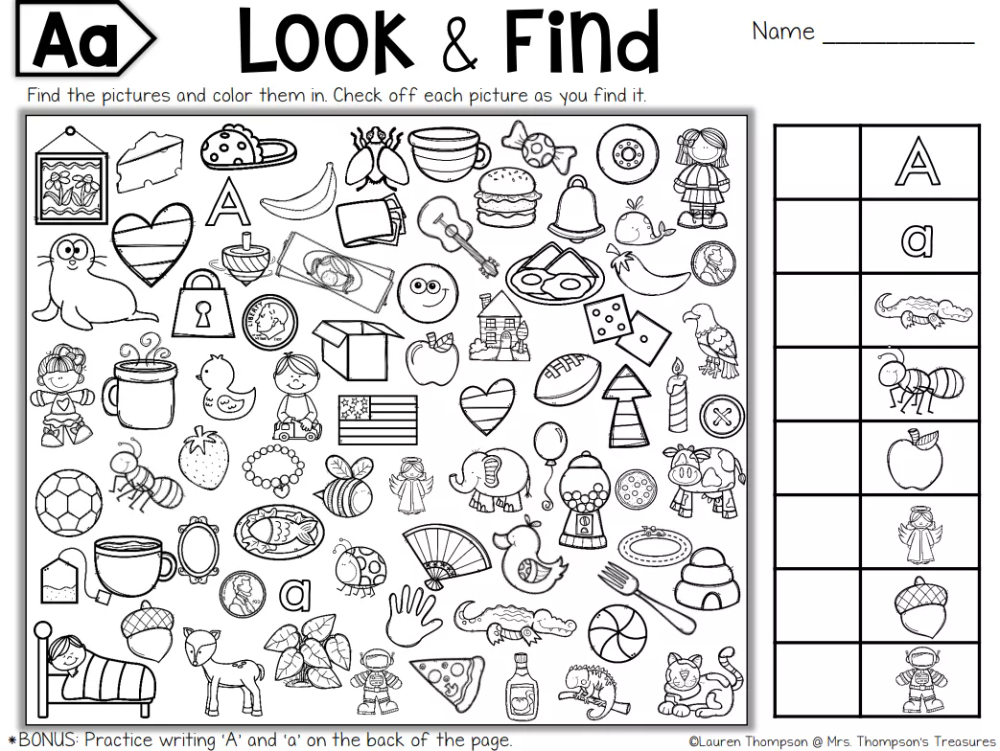 Shake, jiggle and move to get your “junk out of your trunk.”
Shake, jiggle and move to get your “junk out of your trunk.”
Learn More: JCTV Family Vlog
7. Shhh, It’s Quiet TimeChildren need downtime, and to create the best chill time for your kindergartener, you need to create the right atmosphere. Healthy music, low lights or soft lighting, crayons and paper, soft toys, and comfortable seating do wonder!
Learn More: Families In Schools
8. Bean Bag FunBean bags are so easy to make, and they are essential in child development. Practice the art of balancing by getting your little ones to balance bean bags on different body parts. There are so many games that can be played with bean bags; whether it’s a tossing or spatial activity, your learners are sure to have a good time!
Learn More: Empowered Parents
9. Inventive Activity CardsFive-year-olds are full of imagination, and we have to help nurture their literary skills and public speaking.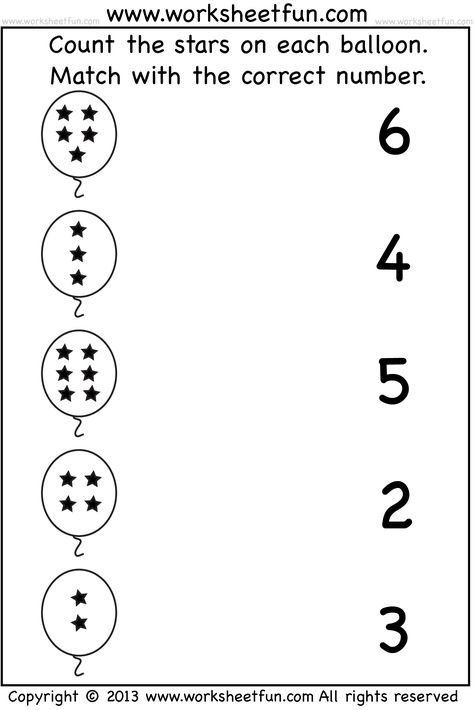 One great idea to help you do this is picture cards that can be bought or made. Children lay a few of the cards on the table and then tell us a simple story step by step.
One great idea to help you do this is picture cards that can be bought or made. Children lay a few of the cards on the table and then tell us a simple story step by step.
Learn More: Tinker Lab
10. Scavenger Hunt For Beginner ReadersUsing cards with simple instructions and some picture cards, pupils can work together and solve the puzzles to discover the treasure. Hide items in the playground or classroom for learners to search for.
Learn More: The Spruce
11. Lego CharadesThis is a fantastic game! Each child gets a picture to recreate using Lego blocks. The other children will guess what they are building as they create. It seems complicated, but it works really well, and your little ones will love the interactive guessing part!
Learn More: Big Family Blessings
12. Musical MovesThis is an adorable, kid-friendly YouTube exercise video with easy exercise moves.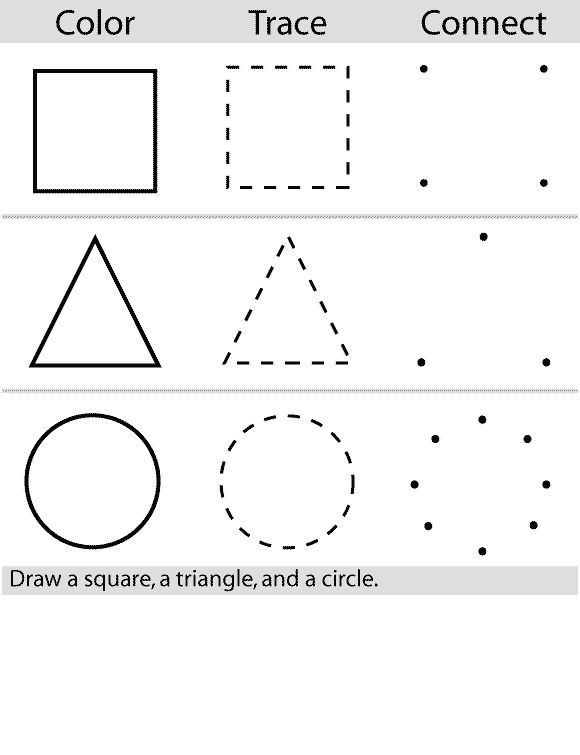 All your little ones need to do is listen to the instructions and follow along. Exercise is important for everyone’s health; if you start young, your students will have good habits!
All your little ones need to do is listen to the instructions and follow along. Exercise is important for everyone’s health; if you start young, your students will have good habits!
Learn More: Monica Flores Fitness
13. Paper Plate SnowmanSnowmen crafts are fantastic Winter makes! Make a paper plate snowman using paper plates, glue, and googly eyes. Print out the body parts before cutting them out and assembling the body.
Learn More: Simple Everyday Mom
14. Learn With The GruffaloTo teach reading, kids need to know how to decipher rhyme. The Gruffalo is a funny tale to help with rhyming, and children can then invent their own crazy animals like a COG or a SNOG!
Learn More: Deanna Jump
15. STEM Paper AirplanesPaper Airplanes can be challenging to make, but with the right instructions, you have a great educational STEM project! All your learners need is some paper, crayons to decorate their finished product and a whole lot of patience!
Learn More: Engineering Emily
16.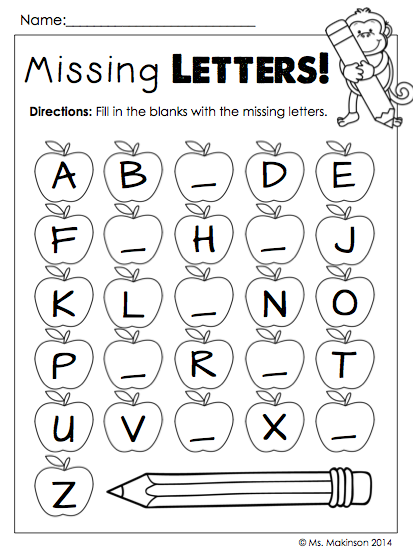 BIG or PIG
BIG or PIG 5-Year-olds are at the age where they are beginning to read. This website is great for practicing blending words and developing pre-reading skills that will improve your child’s phonological awareness.
Learn More: Education.com
17. Bed Of RosesMake a beautiful bouquet of roses using play dough! They are truly beautiful and easy to make. Start with a few small pieces of playdough or clay – rolling them into small balls and then into oval shapes before pressing the pieces together and forming flowers.
Learn More: Krokotak
18. TwisterThere is something exciting about being entangled with your friends! Time to take off your shoes and stretch a little. Challenge your learners to keep their balance as you spin the instruction wheel and have your students follow the prompts by placing their body parts on the mat.
Learn More: Little Learning Corner
19. Obstacle CourseUse some yarn and other household items you have lying around the house to create an awesome obstacle course.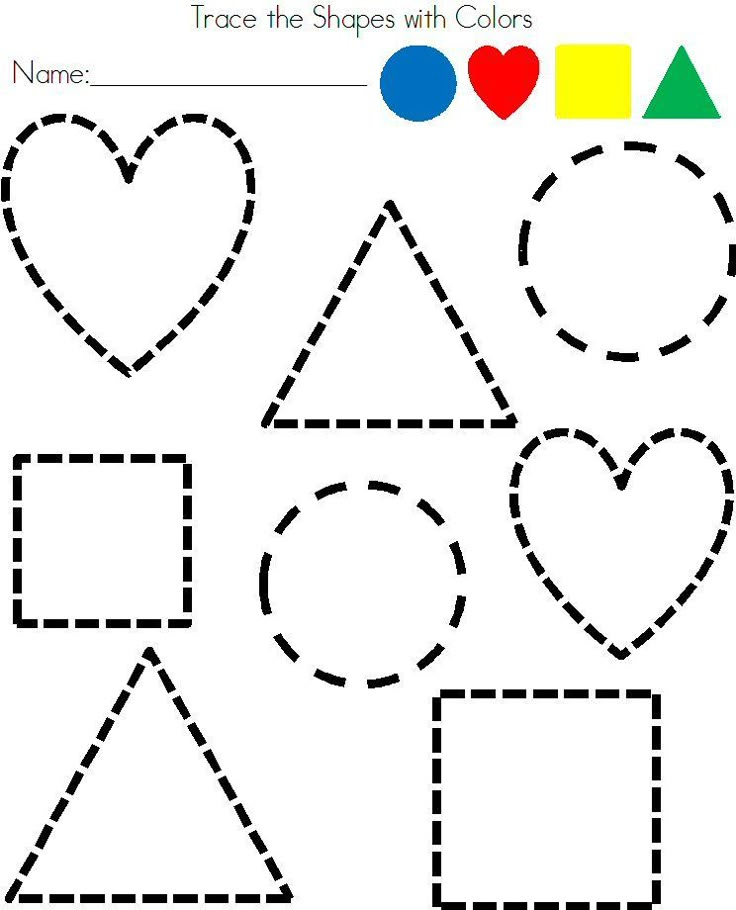 Get your little ones involved in designing and setting up their very own obstacle course before maneuvering through it for hours!
Get your little ones involved in designing and setting up their very own obstacle course before maneuvering through it for hours!
Learn More: Life Family Fun
20. Cotton Ball BalancingThis is an awesome activity to practice balance if you have a few teaspoons and cotton balls lying around. Place a cotton ball on the spoon and have your learners race from one end of the classroom to the other without dropping their cotton balls.
Learn More: A Mom’s Take
21. Full Of BeansSet up a sensory bin using assorted beans. Kids will love the sensation of running their fingers through the beans and enjoying the texture. They can use containers to pour the beans from one box into another or even practice their math skills by counting out a given number.
Learn More: Bounce Back Parenting
22. Hot Potato Balloon GameHot potato entails moving extremely fast. Blow up a balloon and have your learners stand in a circle.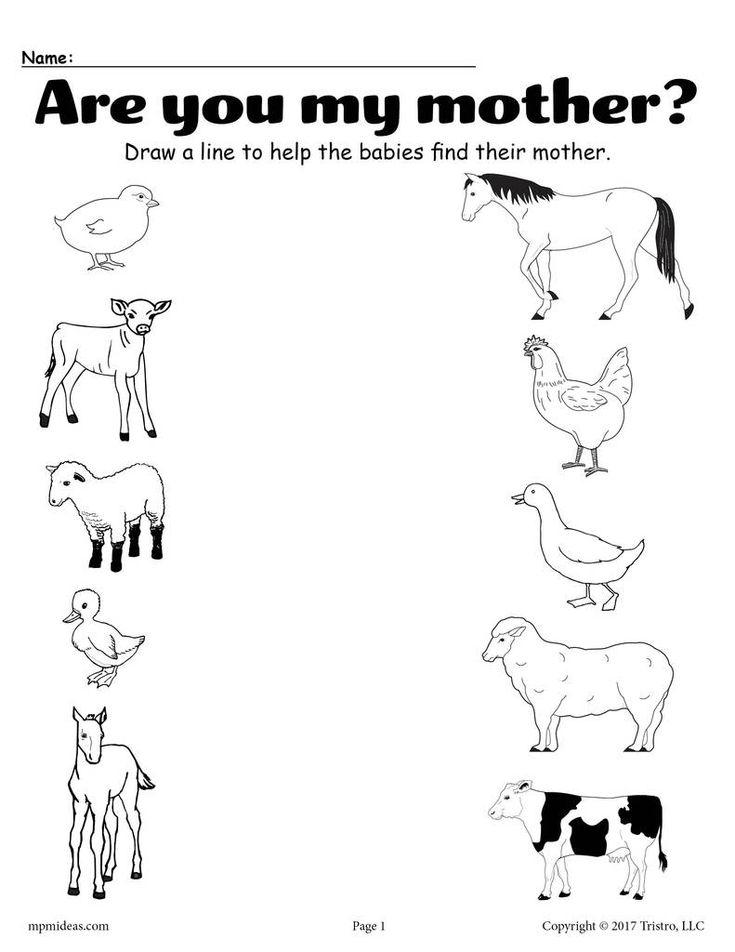 The object of the game is to keep the balloon in the air and not hold onto it for too long.
The object of the game is to keep the balloon in the air and not hold onto it for too long.
Learn More: Empowered Parents
23. Simon SaysSimon says is an awesome opportunity to practice listening skills. Learners can play by following the instructions called out by “Simon.” If an instruction is given without the words “Simon says…”, the learners who complete the action are out.
Learn More: Patty Shukla Kids TV – Children’s songs
24. Dice GameMoo like a cow, jump like a rabbit, sing like a bird- all of these options and more can be played in an animal activity dice game. Roll the die and follow the instructions written on a piece of paper. Make sure your learners have plenty of space to move around in.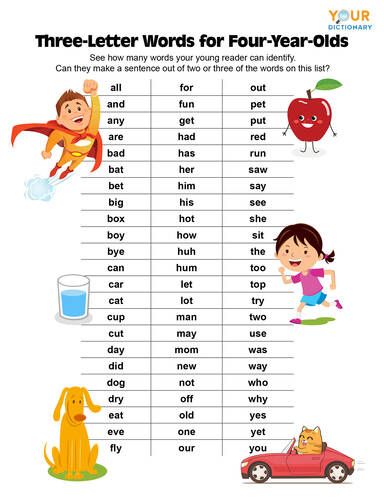
Learn More: Twitchetts
25. HorseUsing smaller basketball nets and softballs, children can play this great classic game. The object of the game is to shoot the ball into the basket from different positions. If you miss after three tries, you get an H, and so on. Once you have the word HORSE spelled out in full, you’re eliminated from play.
Learn More: Rookie Road
Related posts:
Preschool activities, what to play with a 5-6 year old child at home - educational games for children
If the parents of a child of primary preschool age are most concerned about sleep, toys, walks and the good mood of the baby, then the parents of a 5–6-year-old preschooler have the realization that school is just around the corner and “something needs to be done”. It is not for nothing that this period is called the senior preschool age.
You can, of course, entrust the entire educational process to teachers of a preschool institution. But there are kids who do not attend kindergarten. And there are parents who strive during this period to give the child as much knowledge and opportunities to develop as possible. Currently, the choice of exciting activities that are useful for the development of the child is quite wide: interesting educational aids and books, various educational games that you can play with your mother, and much more.
But there are kids who do not attend kindergarten. And there are parents who strive during this period to give the child as much knowledge and opportunities to develop as possible. Currently, the choice of exciting activities that are useful for the development of the child is quite wide: interesting educational aids and books, various educational games that you can play with your mother, and much more.
What should you strive for at age 5-6?
Do not be surprised, but we will not talk about how many words per minute a child should read by the first grade or what examples to solve, because a preschooler should not be able to do this. After all, this period is called the preschool age. In turn, this means that with the right school program, such as "Primary School of the 21st Century", the child will learn everything at school, and do it with interest, joy and at a pace that is comfortable for him.
But there are important mental processes, skills and knowledge, without the proper development of which the child will not be able to assimilate school material.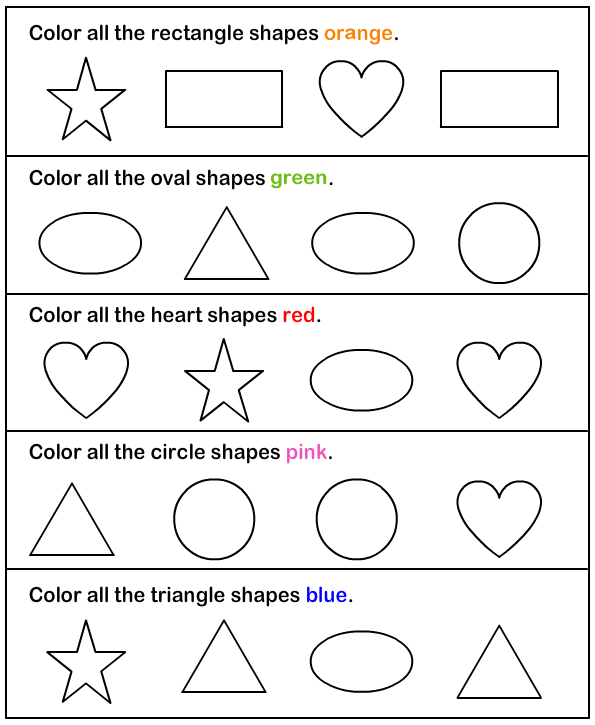 This:
This:
- memory,
- imagination,
- thinking,
- developed speech,
- knowledge about the surrounding world.
Based on these components of preschool development, we will talk about what a child needs to be taught at the age of 5–6 years.
Memory. The child develops arbitrary memory. This means that a five-six-year-old can remember something (for example, combinations of objects shown to him) by an effort of will, while at an early age mechanical memory works to a greater extent: the baby remembers a word or object without thinking. Also an indicator of the emergence of arbitrary memory is the ability to memorize poems.
Imagination helps your little one make up interesting stories with successive events. Some five-year-olds are already beginning to compose fairy tales, invent and draw animals from the fantasy world. Thus, by the age of 5-6, a child can compose a short story or a fairy tale on a given topic with a given character, as well as draw an unknown animal or a fairy-tale hero.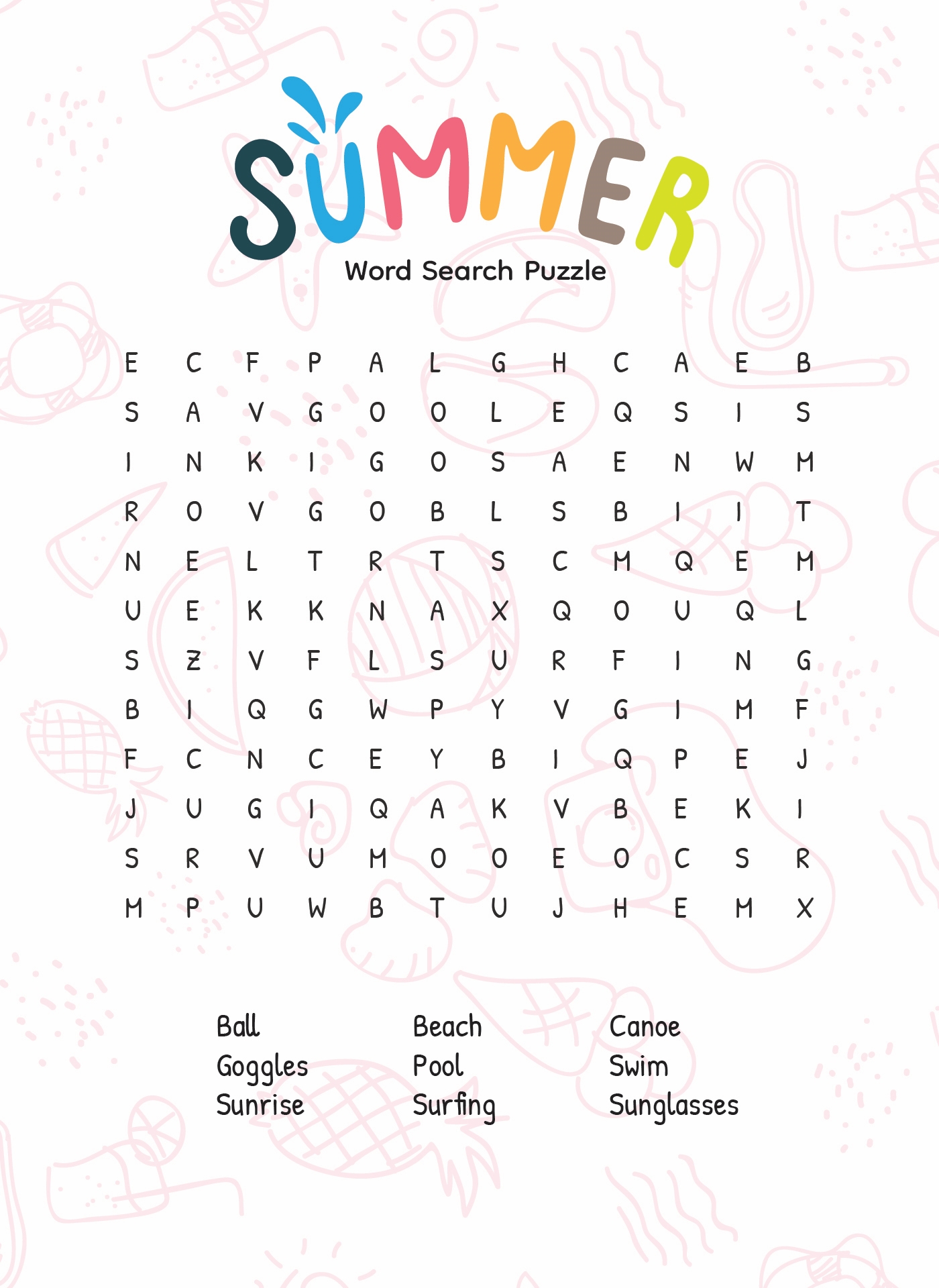
Thinking. The formation of figurative thinking in older preschoolers allows them to solve simple problems in their minds. Logical thinking helps children build causal relationships, analyze and draw conclusions, generalize objects based on one or two signs. For harmonious development, one cannot give preference to one of the types of mental activity - it is necessary to develop logical thinking along with the development of figurative thinking.
Speech . In speech, your babies should no longer have deficiencies in the pronunciation of sounds. Children of this age period recite a poem with expression, with the help of an adult compose a story based on a picture, retell a small simple text. The vocabulary of the child is expanding every year, so do not forget about the use of antonyms and synonyms in speech.
The world around is extremely interesting for any child, so it is not difficult to give knowledge about its structure.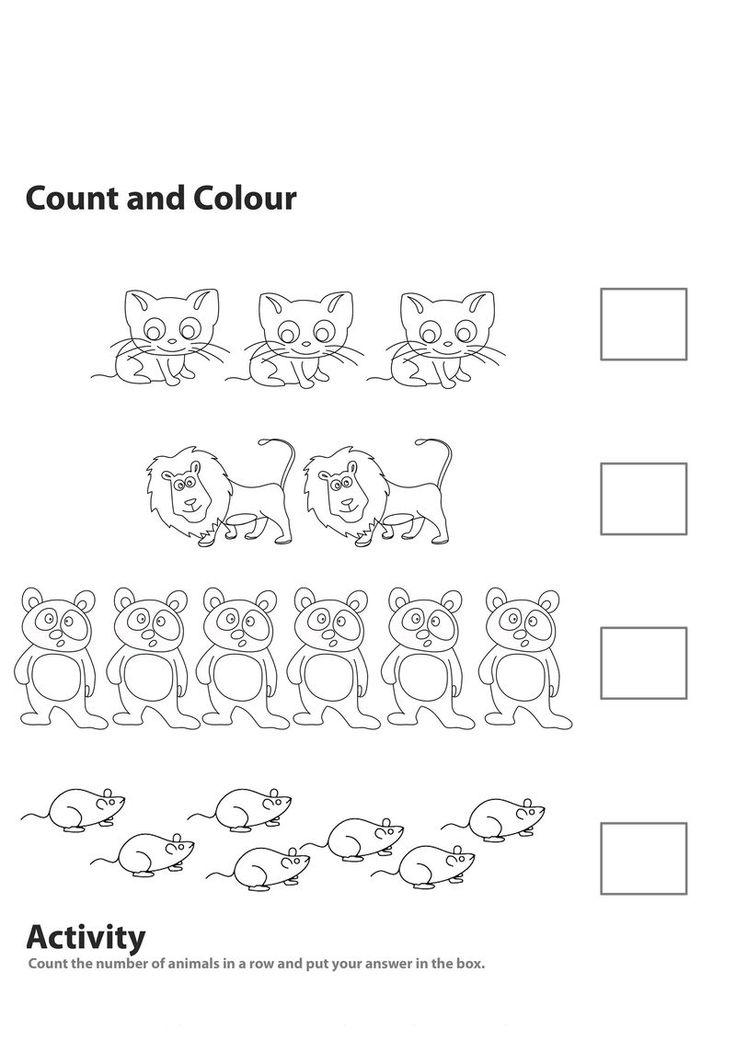 For a 5-6-year-old child, it is important to know the daily routine, days of the week, navigate the seasons; know the basics of human structure, the main representatives of the animal world, birds, insects, plants. Kids need to be helped to understand the phenomena of nature and the structure of the earth's landscape, to learn their last name, first name and patronymic (and then the names and surnames of family members). Knowing the home address will help the child in case of an unusual situation. In addition, the future first-grader needs to navigate the surrounding household items, professions and tools.
For a 5-6-year-old child, it is important to know the daily routine, days of the week, navigate the seasons; know the basics of human structure, the main representatives of the animal world, birds, insects, plants. Kids need to be helped to understand the phenomena of nature and the structure of the earth's landscape, to learn their last name, first name and patronymic (and then the names and surnames of family members). Knowing the home address will help the child in case of an unusual situation. In addition, the future first-grader needs to navigate the surrounding household items, professions and tools.
You can listen to the audio version of the article:
What and how to do with a child?
Before offering a child developmental tasks, we recall that it is not recommended to conduct classes to teach reading or writing.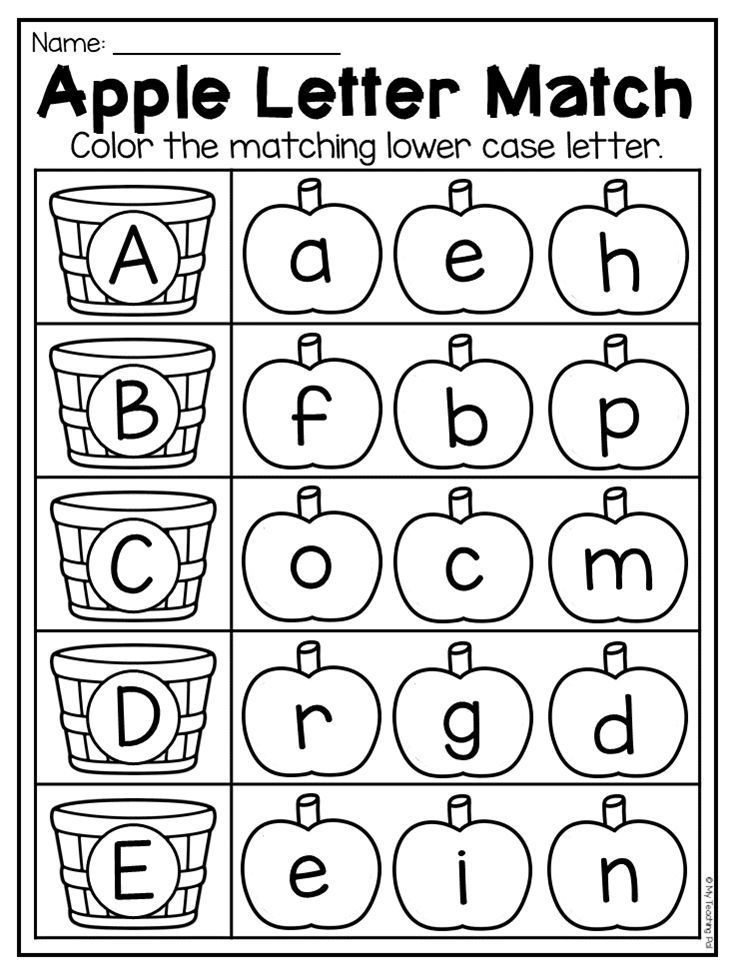
Memory
- Exercise "Number series". Call the child in a row 3–5–7 different numbers and ask them to repeat. Gradually complicate the task, using not only numbers from the first ten, but also two-digit, even three-digit ones.
- Video sequence exercise. Show cards with the image of various objects for 10-15 seconds, and then close them and ask them to list all the objects that the child remembered. Gradually increase the row: start with 4-5 cards and bring their number to 8-10 (or more).
- Memorization and recitation with the expression of poetry is an excellent memory training and an opportunity to develop artistic talent.
- Singing songs is a wonderful activity that develops memory, ear for music and the ability to reproduce what you hear.
Imagination
- Constructor. Any designer will do, but it is desirable that the child does not design according to the scheme or instructions, but invents and embodies the images himself.
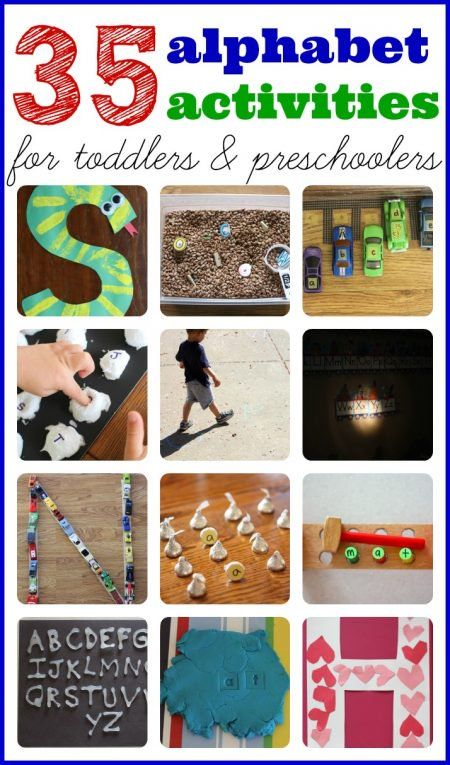
- Modeling. Plasticine is an excellent material for self-expression, developing fine motor skills. A child can sculpt not only animal figures, but also entire plots. Offer to “draw” a whole picture on cardboard with plasticine, you can draw it with your child.
- Application. Invent, cut and paste - three developmental actions at once.
- Listening to fairy tales gives rise to numerous images in the child's head, bright and interesting. And their further reproduction will bring a lot of pleasure not only to children, but also to adults. Assign roles and play!
Thinking
For the development of thinking, they use not only logical tasks, but also such techniques as experimentation. The experiment gives the child the opportunity not to be afraid to make a mistake, because the absence of a result is also a result!
- Labyrinth. With the help of a pencil, ask the child to go through the maze and find a way out of it.
- Solve riddles.
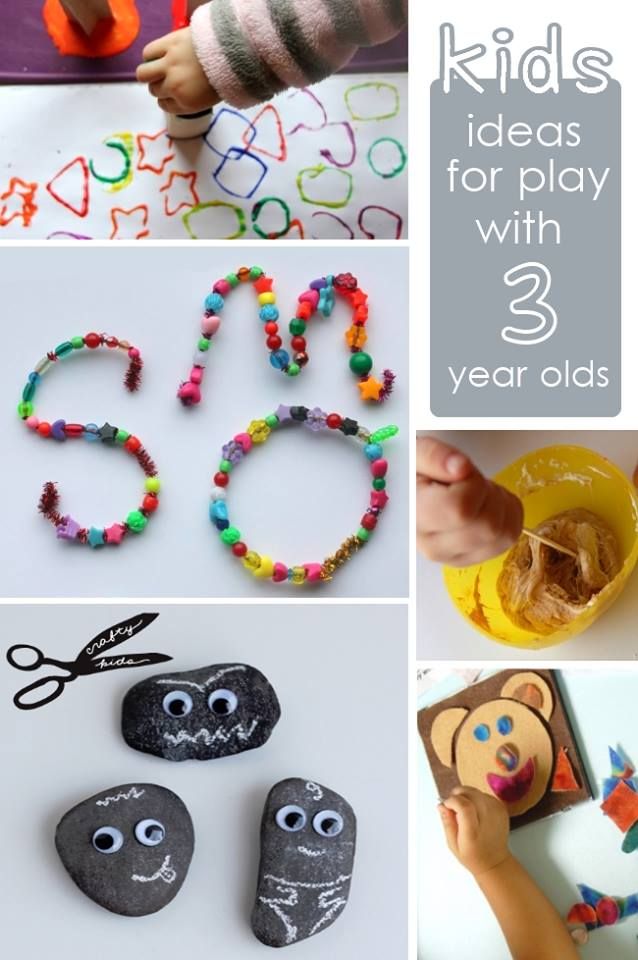 And make them yourself: let the kid try to conceive and describe an action or an object, and you - to guess what was hidden.
And make them yourself: let the kid try to conceive and describe an action or an object, and you - to guess what was hidden. - "Find what's missing" task. In a series of similar objects that have a common feature, ask them to find one image in which this feature is missing, and draw the "lack".
- Geometric series, arranged in a certain sequence, is an excellent exercise for the development of analysis.
- Do simple experiments together. The easiest way is to freeze water in a glass and then melt the ice. Such experiments will add knowledge about the world around.
- Draw Friends: Have the child draw the tallest and shortest friend, then the friend who is taller than the shortest but shorter than the tallest. Then sign their names together. A difficult task, but your child by the age of seven will be able to cope with it.
Speech
Speech development is best done in individual lessons .
- Learn as many tongue twisters as possible with different letters.
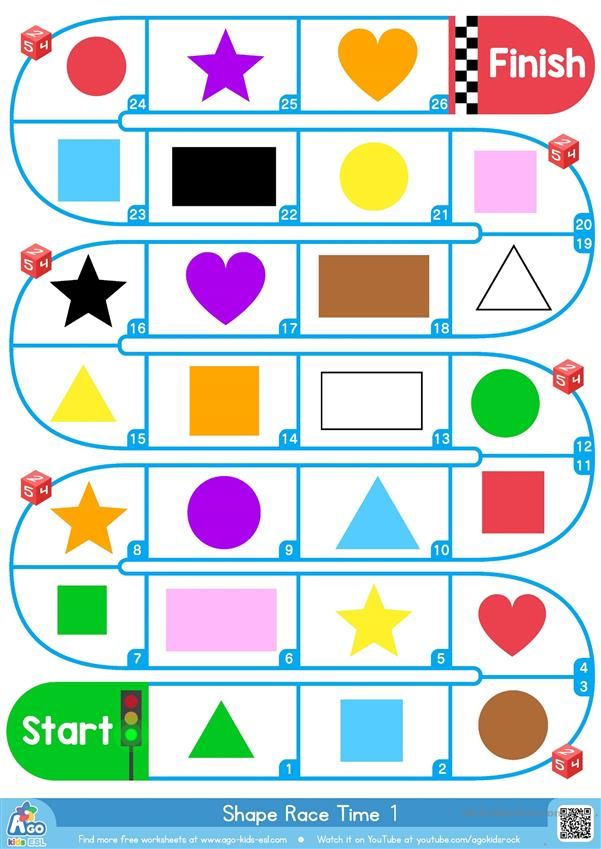
- Retell stories with more detail, or describe a picture with just as much detail.
- Play cities, fruits, vegetables, animals to build more vocabulary.
- Choose antonyms and synonyms for words.
- Ask the child to name as many features of one object as possible. For example, an apple is “round”, “red”, “sweet”, “juicy”.
World around
- Use flashcard quizzes with light bulbs on when you answer correctly. Very clear and fun for kids!
- Themed games. Name in turn domestic animals, wild animals, birds, marine life. The last person to answer wins.
- A dial with arrows that can be translated by the child himself will help to master the time and understand the daily routine. Together draw a bright schedule for the week by day and get acquainted with the concepts of "day" and "week".
- Play professions: cook, doctor, teacher, salesman, builder.
Lesson tips
Try to practice every day.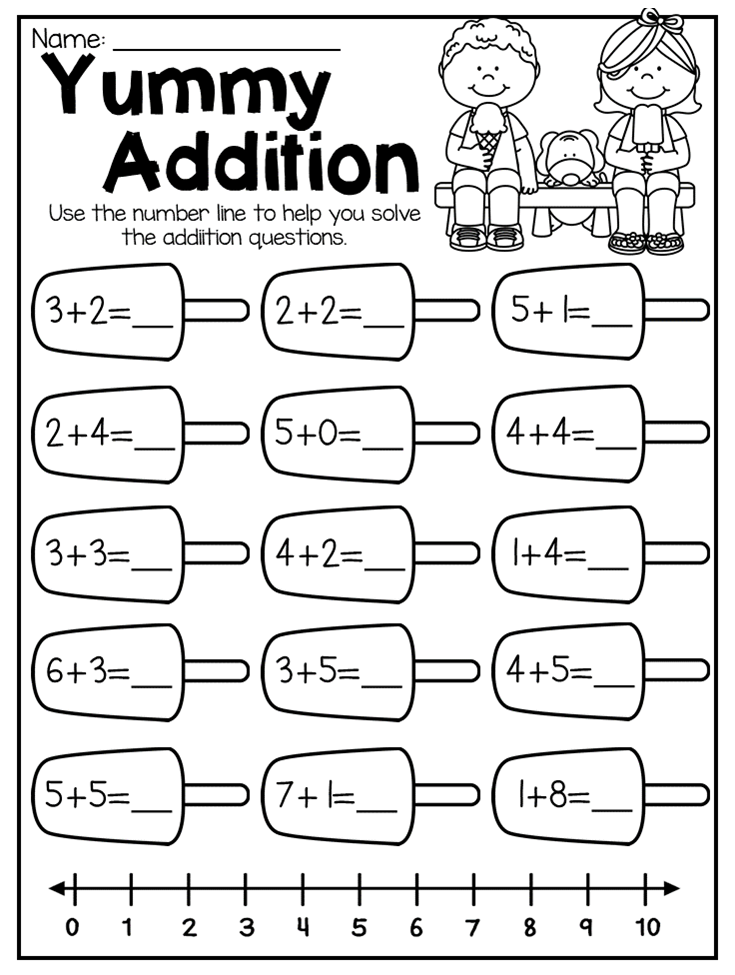 Regularity increases memorability.
Regularity increases memorability.
Set aside 15 minutes for each block. Between them, take a break for physical games or gymnastics.
Equip, if possible, a place for classes so that there are no extra things or toys on the table. In a properly organized workplace, it will be easier for the child to concentrate.
If the child cannot complete the tasks the first time, be patient: your child is only at the beginning of the path of knowledge.
Sofia Rogozinskaya
30 educational and entertaining games
Every mother of a five-year-old often feels the same way as the heroine of the cartoon “Go Monkeys!”. Preschoolers simply have inexhaustible reserves of energy that need to be directed in the right direction. As the well-known song rightly says, every small child must “run and jump, grab everything, kick with his feet, otherwise he will explode: bang bang - and he’s gone.” Therefore, we suggest that parents study games with a child of 5 years old - firstly, the baby will be busy with work, and secondly, it is in the process of playing that children develop and learn something new.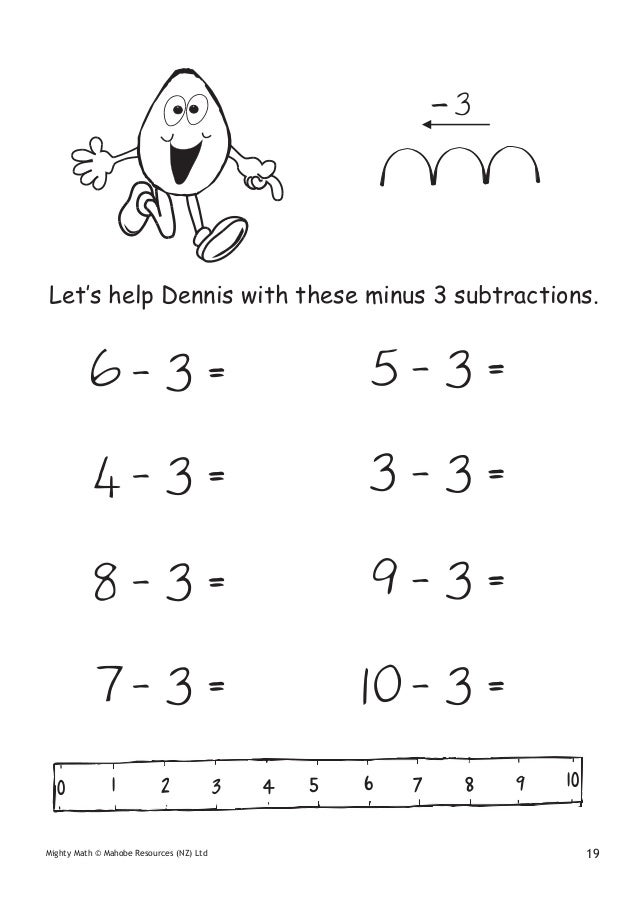 In addition, joint classes contribute to the creation of close contact between parents and children. Time spent together is the best gift you can give your child.
In addition, joint classes contribute to the creation of close contact between parents and children. Time spent together is the best gift you can give your child.
What kind of games for a child of 5 years to choose? If your kid is active and regularly puts the whole house on his ears, then dance or sports games will come to the rescue. Does your five-year-old like to sing, dance, and put on home theater performances? Here you need fun that will help develop creativity. Diligent kids who love to think, read, learn, intellectual entertainment (for example, board games, games in English, psychological games, etc.)
Kidpassage will tell you what games with children aged 5 should be adopted by parents. With our tips, every adult can easily entertain a bored child, teach him something new and just have fun together.
Contents
- Games with a 5-year-old child at home together
- Games for children 5 years old at home
- Didactic games
- Music games
- Board games
- Games for a group of children aged 5
- Logic games
- Educational games
- Math games
- Christmas games
- Speech therapy games
- Attention games
- Role play
- Outdoor games for children 5 years old
Games with a 5-year-old child at home together
You don't need a big company to have fun.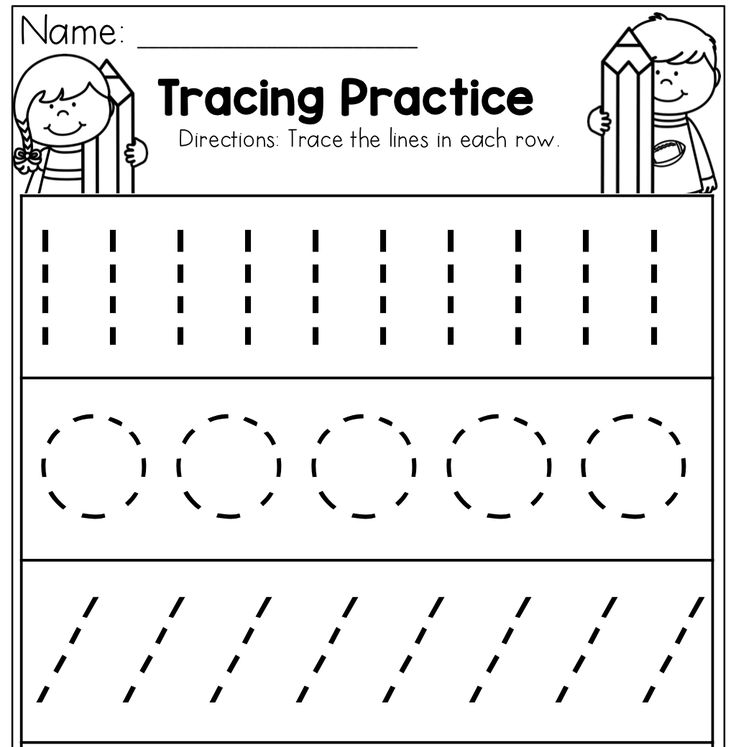 There are many educational and interesting games for two. It can be a game of a mother with a child of 5 years old or joint activities of two children.
There are many educational and interesting games for two. It can be a game of a mother with a child of 5 years old or joint activities of two children.
Quiet games for two - checkers, chess, Sea Battle, Tic-Tac-Toe and more. However, it is recommended to alternate calm and active games, because children cannot sit still for a long time, they definitely need to move around, throw out excess energy.
1. "Fish, birds, animals"
Props : rubber ball.
This is a game that is very similar to "Edible - Inedible", but in a newer, unhackneyed interpretation. The leader throws the ball to the participant and says one word: “fish”, “birds” or “animals”. The participant must answer the corresponding name of the representative of the fauna. So, the leader says “fish”, the participant answers “pike” and returns the ball.
2. "Sumo Tournament"
Props : two large home t-shirts, jump rope, two pillows, two straps.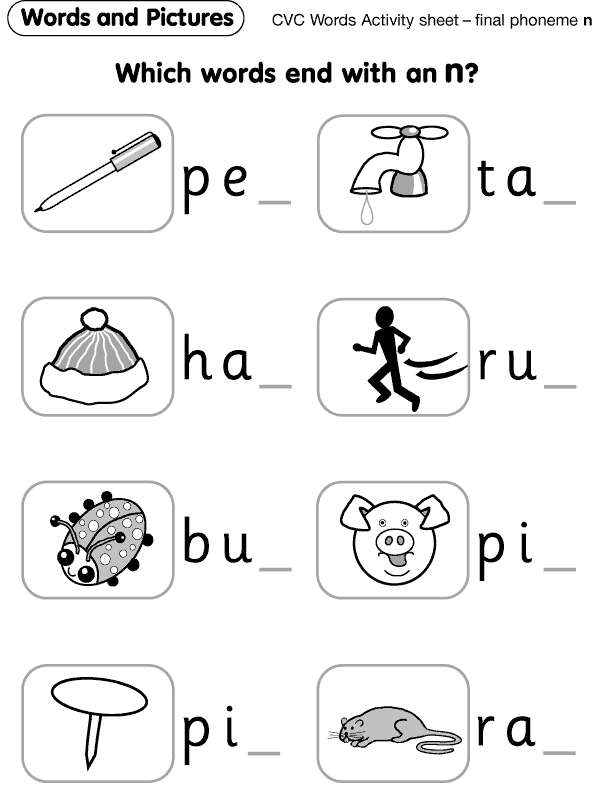
This game is suitable for two children of about the same age. A rope is made into a circle, and with the help of pillows, straps and T-shirts, children turn into sumo wrestlers. The task of young sumo wrestlers is to push the enemy out of the circle.
Interesting games for two at home are easy to come up with on your own: it can be tug of war, basketball with a wastebasket and hand-made balls from A4 sheets, dress-up fun, and dancing.
Games for children 5 years old at home
Parents often have a question about what to do with their child at home. Bad weather on the street, holidays at school or quarantine in kindergarten - and now the baby is already bored in the apartment or entertains himself with gadgets. However, as soon as parents turn on their imagination and involve the child in the gameplay, boredom disappears instantly! Sofa cushions and blankets turn into a fairy-tale palace, a mop becomes a knight's sword, and a house cat becomes a fire-breathing dragon.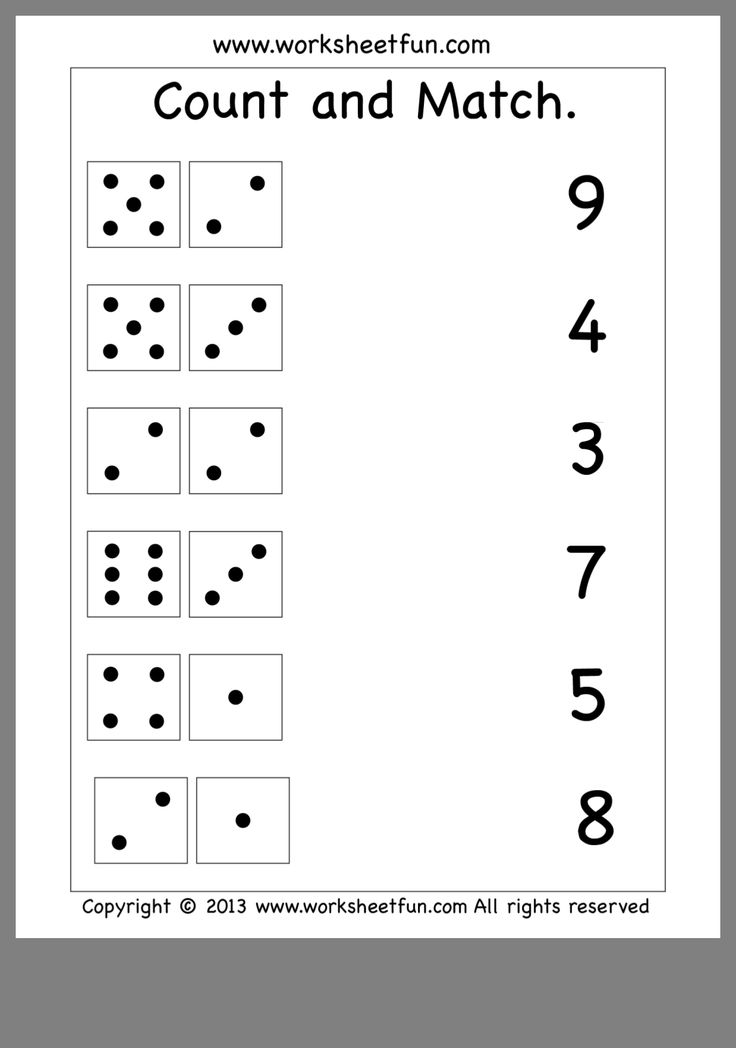 After a while, the laundry basket already turns into a basketball basket, and an old T-shirt stuffed with padding polyester into a soft ball, safe for mirrors and furniture. What to do at home with a child of 5 years old is not a problem for creative moms and dads!
After a while, the laundry basket already turns into a basketball basket, and an old T-shirt stuffed with padding polyester into a soft ball, safe for mirrors and furniture. What to do at home with a child of 5 years old is not a problem for creative moms and dads!
3. "Border on the castle"
Props : blanket, soft toys.
The room should be divided into two parts with a blanket - the "border". On one side is the child, on the other is the parent. Each participant in the game has the same number of toys. On command, the players must transfer as many of their "shells" as possible to the side of the enemy.
Important: use only soft toys (hollow rubber balls, balloons) to avoid injury, damage to furniture and mirrors in the house.
4. "New life for old items"
Props : box or bag with various household items.
Various items are placed in the box: cubes, a broom, kitchen utensils, pens and pencils.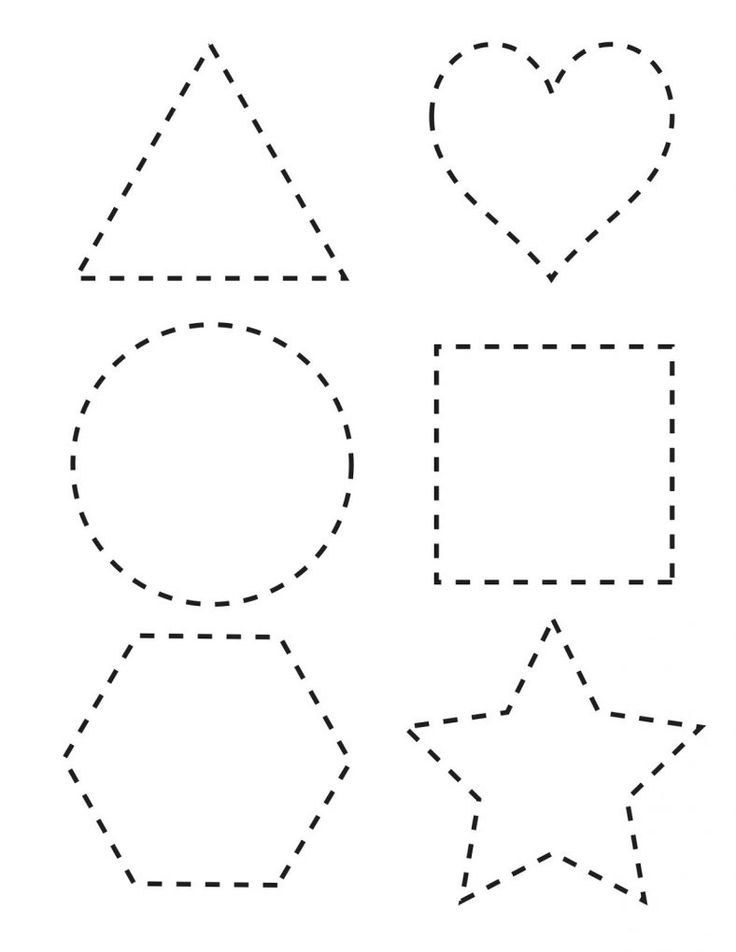 The child pulls out one item at a time and, together with his parents, comes up with how it can be used again. So, a broom can turn into a bouquet if you decorate it with beads and ribbons, and pots make good helmets for motorcycle racing.
The child pulls out one item at a time and, together with his parents, comes up with how it can be used again. So, a broom can turn into a bouquet if you decorate it with beads and ribbons, and pots make good helmets for motorcycle racing.
Didactic games
Didactic or educational games are the main tool for kindergarten and primary school teachers, but parents can also use educational games to not only have fun, but also spend time with their children in a useful way.
As a rule, educational games involve the use of various visual materials. These can be story cards, cubes with letters, numbers or image fragments, cards and much more.
5. "Detective and robbers"
One of the participants is assigned as a robber who needs to hide from the detective. The host should come up with some kind of detective story in advance. In order for the robber not to be seen through, he needs to properly disguise himself. The rogue leaves the room and changes something about his appearance, and investigators need to notice and point out these changes.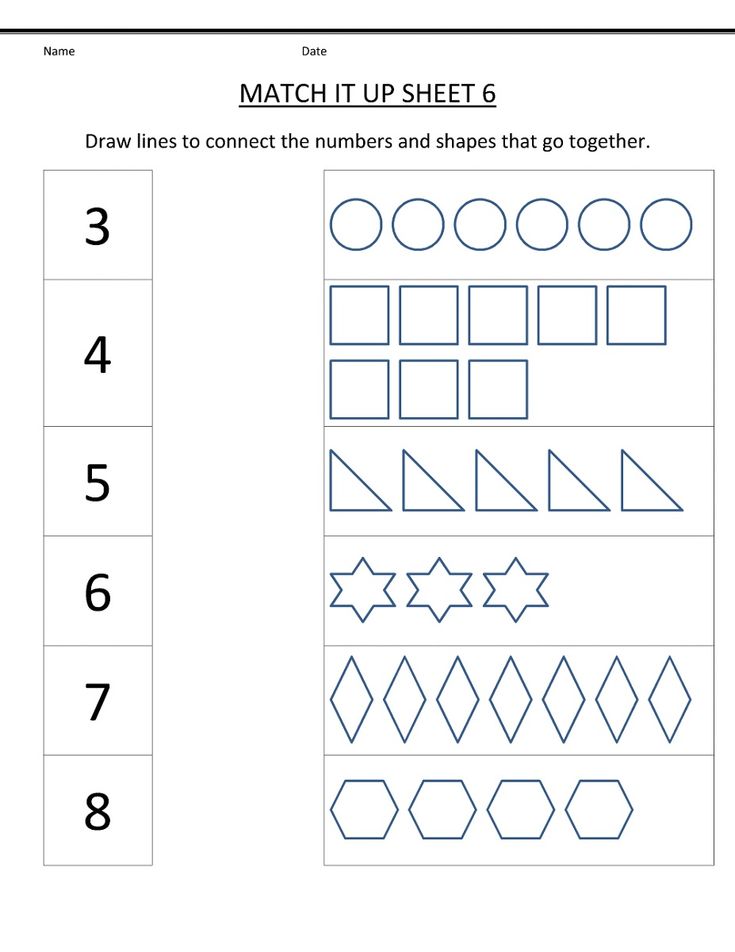 The game perfectly develops imagination, associative thinking and memory.
The game perfectly develops imagination, associative thinking and memory.
6. “True or not true”
The facilitator names different facts, some of them are true, some are not. If the children hear the truth, they clap their hands; if they hear a lie, they stomp their feet. To make it more interesting, facts can be thought up in poetic form, for example:
- Daisies bloom in the garden in winter ( not true ),
- The iron will iron your shirts ( true),
- In winter, hares have black fur ( not true ),
- The lion in Africa is the most cowardly of all ( false ).
Music games
This category includes two types of entertainment - dance games and singing. Musical games are good because they allow you to reveal the creative abilities of the baby, as well as spend extra energy. Every hyperactive child will appreciate the fun, where you can dance to your heart's content.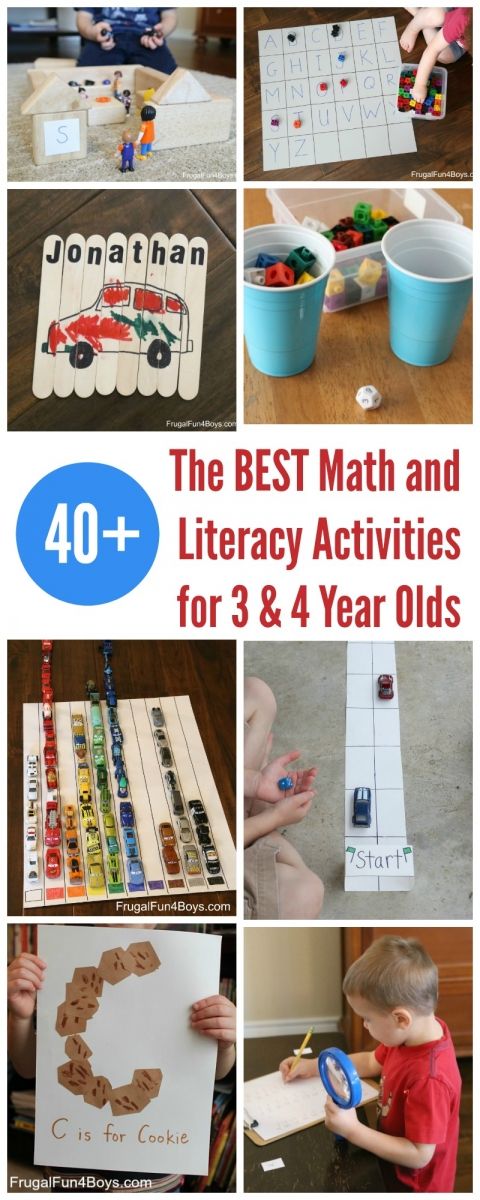
7. "Invented song"
Props : task cards, backing tracks of various melodies.
Singing is a great way to cheer up, especially if you sing funny funny songs of your own composition. The child draws a card with a task written on it (“a song of a hungry wolf”, “a foreigner who does not speak Russian well”, “sad bells”, etc.). The task of the participant is to complete the task either to the backing track of a well-known melody, or a cappella, without musical accompaniment.
8. “Aram-zam-zam”
At the beginning of the game, the parent shows the movements:
- “aram-zam-am” – claps on the knees, three times, with repetition;
- "ghoul-ghoul-ghoul-ghoul" - rotations in front of the chest with arms bent at the elbows, clenched into a fist;
- “arafik-arafik” - forward bend with arms crossed on the chest, first from left to right, then from right to left.
When the child remembers the movements, you can move on to the game.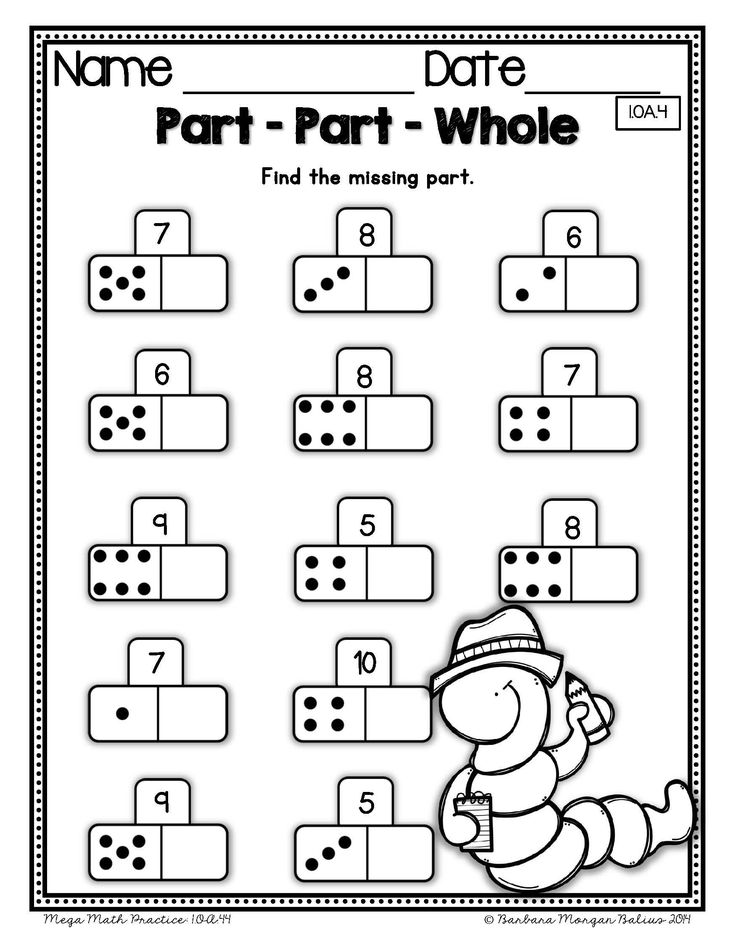 The essence of the game is to correctly repeat the dance when the song is turned on. The catch is that the tempo of the melody gets faster each time.
The essence of the game is to correctly repeat the dance when the song is turned on. The catch is that the tempo of the melody gets faster each time.
9. "Guess the performer"
Requisite : a record of songs performed by various cartoon or fairy-tale characters, and cards with images of these performers.
This game perfectly develops the musical memory of five-year-olds. The rules are quite simple: the parent plays a fragment of a song from the cartoon to the child, and the child must choose an artist card. You can complicate the task and take songs and characters that are not familiar to the young player so that he can guess the artist according to the meaning of the song. For example, include a fragment of the song "Chunga-Changa", which will correspond to a picture of funny little islanders. You can also let them listen to the line “And then my girlfriends are leeches and frogs,” and the child must guess that it is Vodyanoy who sings.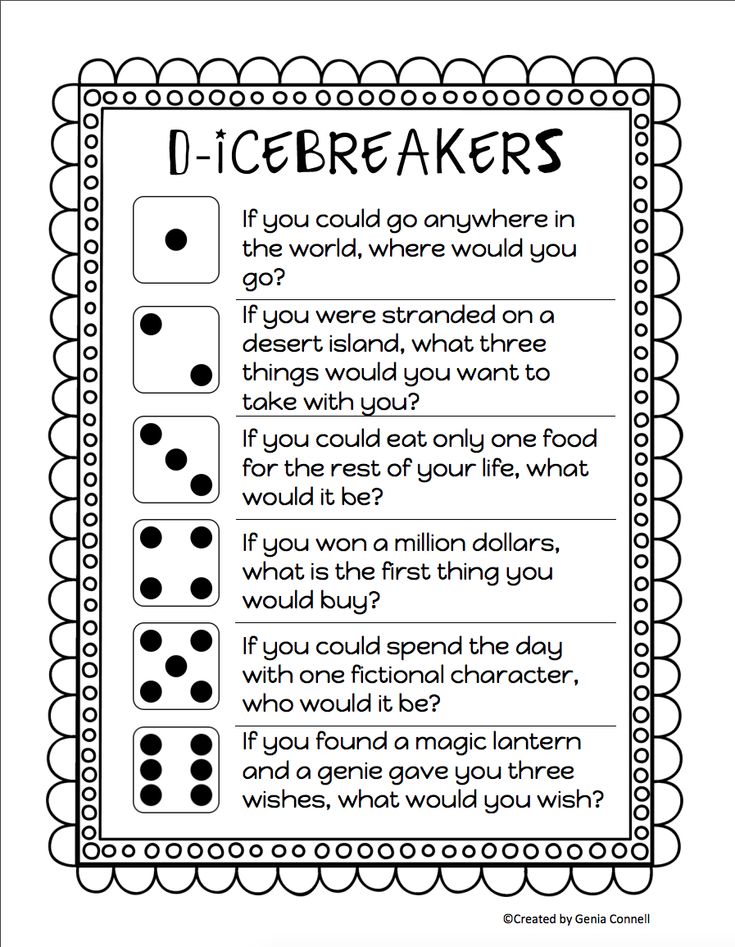
Board games
Properly selected board games may well replace full-fledged developmental activities. "Monopoly" will teach you how to count, "Erudite" (aka "Scrabble") - to compose and learn new words, "Alies" will pump up the acting abilities of children. First of all, board games help to improve mathematical skills, because in any game you need to keep track of moves and points earned. Not to mention that it is an excellent training of perseverance, thinking and attention.
Entertaining games in this category can be of different topics: about animals and plants, dinosaurs, fairy-tale worlds, connected with history or literature, etc. It is important to choose exactly the topic that the child is keenly interested in - then it will be much easier for him to learn the rules and join the gameplay.
Tables also come with cards, chips, dice, puzzles. The simplest ones are “walkers”, where you need to roll a die and move a chip on the playing field for the number of steps that have fallen out.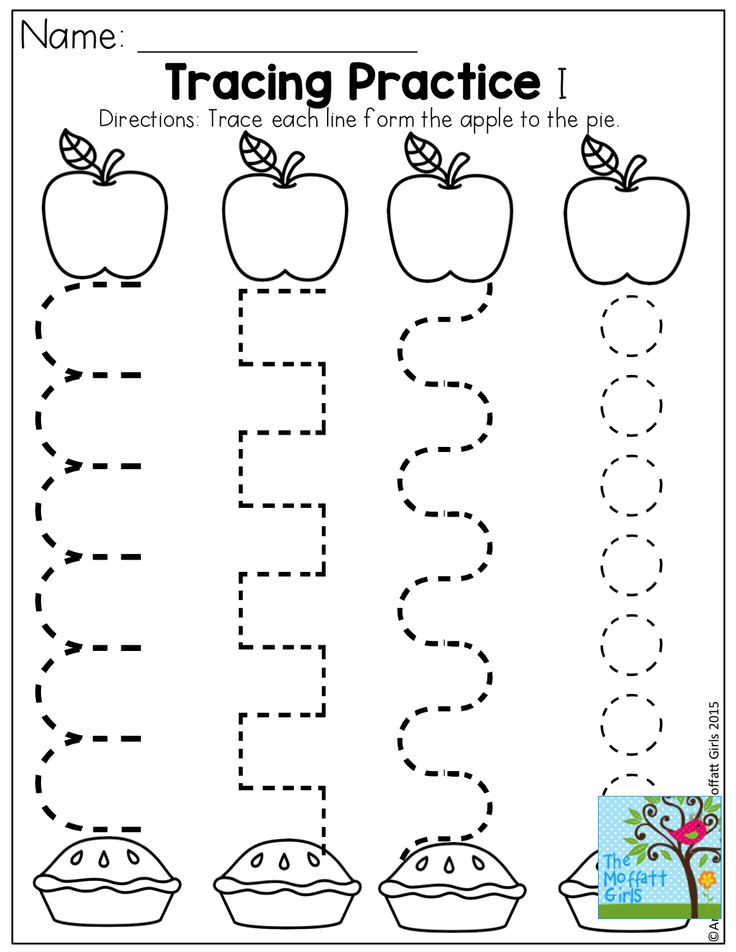 The most difficult type of board games are strategies, where you need to calculate your every move and think about what consequences it may have. Five-year-olds are also very fond of funny games, such as Twister.
The most difficult type of board games are strategies, where you need to calculate your every move and think about what consequences it may have. Five-year-olds are also very fond of funny games, such as Twister.
- DIY board games for children
10. "Puzzles"
Props : pre-prepared puzzle pieces.
You can buy a ready-made puzzle, but it's much more interesting to make it yourself. Parents together with their children can draw a picture on a sheet of cardboard, and then cut it into several parts, or approach the task more creatively and apply their own drawing: for example, on several ice cream sticks, pebbles, cotton pads, and so on.
11. "Flea"
Props : chips, coin.
This is a popular game played by our mothers and fathers, grandparents. On the edge of the chip, the role of which can be played by a small stone, bean / pea, the player presses with a coin, as a result of which the chip bounces like a flea.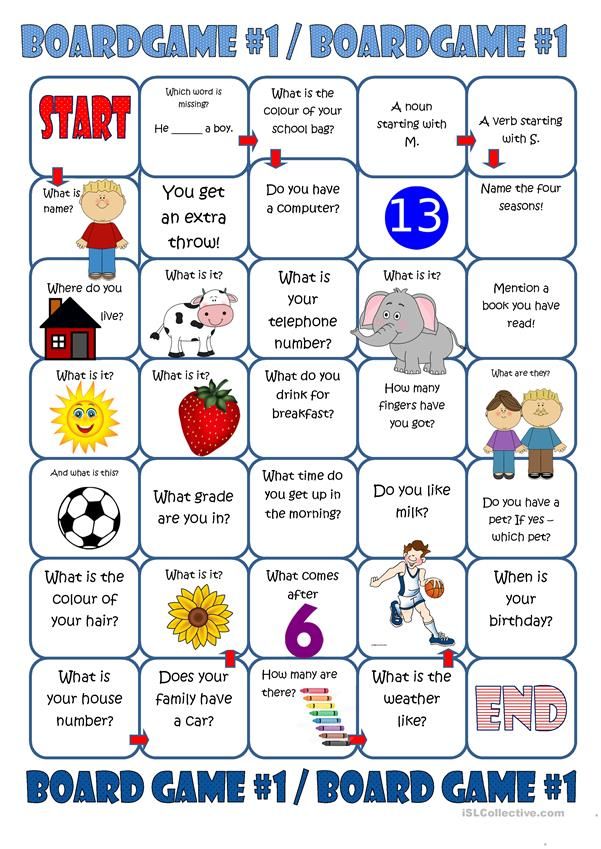 The essence of the game is that as many player's fleas as possible "jump" onto the opponent's playing field. The playing field can be made from a box of chocolates by dividing it in the middle with a straight line.
The essence of the game is that as many player's fleas as possible "jump" onto the opponent's playing field. The playing field can be made from a box of chocolates by dividing it in the middle with a straight line.
Games for a group of children aged 5
Playgrounds, playrooms or parties tend to be crowded with children who also need to be organized and offered fun activities. Group games can be sedentary (quizzes, riddles, puzzles) or active (relay races, races). All children will definitely enjoy an exciting quest, which combines the moment of an intellectual game - the search for clues and clues, and an element of activity, because, as a rule, you need to run for clues. Five-year-olds love to compete, so you can offer them team games on the score.
12. "Human knot"
Children hold hands and, at the command of the facilitator, begin to get tangled without disengaging their hands. After the “Stop” command, the leader must unravel this human knot without breaking the hands of the participants.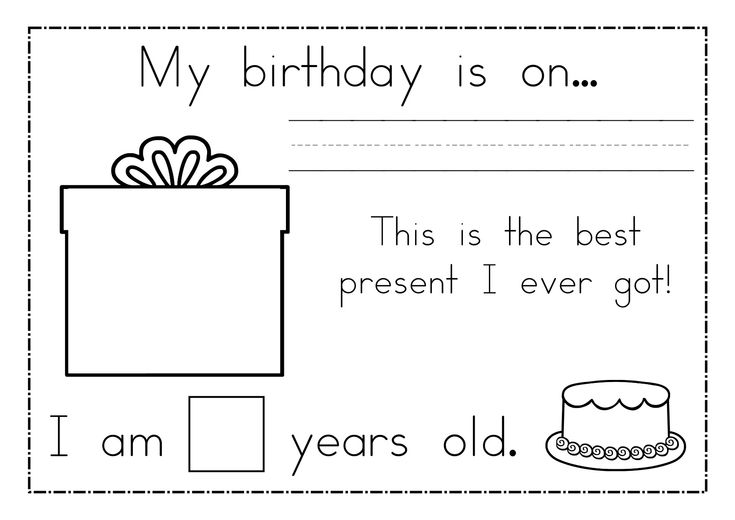 You can complicate the game and limit the time of unraveling. If the leader does not meet the deadline, then the children unhook their hands and rush in all directions, and the leader must catch one of the participants. Whoever falls into his hands becomes the new leader.
You can complicate the game and limit the time of unraveling. If the leader does not meet the deadline, then the children unhook their hands and rush in all directions, and the leader must catch one of the participants. Whoever falls into his hands becomes the new leader.
13. Centipedes
This is a fun game for a group of children. Participants line up and hold the one in front by the belt, thus forming a long centipede. At the command of the lead centipede, it must simultaneously perform the following tasks:
- raise the right paws;
- raise the left legs;
- run in circles;
- move back;
- catch your tail;
- move forward by jumping.
In addition, you can arrange an obstacle course for the centipede or blindfold the “head” - the one in front.
Logic games
Games for the development of logical thinking are held in kindergarten and primary school, some tasks parents can take on board and deal with the child on their own.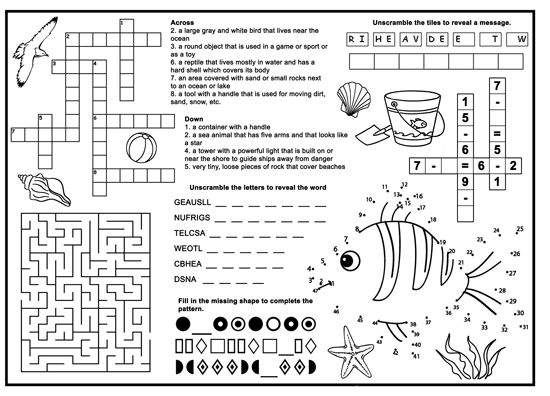 No kid is born with the ability to think logically, this is an exclusively acquired skill that must be developed from childhood. In this, the association game, puzzle, matching, quiz will help teachers and parents.
No kid is born with the ability to think logically, this is an exclusively acquired skill that must be developed from childhood. In this, the association game, puzzle, matching, quiz will help teachers and parents.
14. Trick problems
To solve trick problems, children need to be attentive and use their imagination. Such tasks also teach that sometimes you need to deviate from the usual algorithm in order to find the right solution.
Questions that can serve as an example of logical problems:
- What is impossible to eat for breakfast? (lunch or dinner).
- What is as big as an elephant but weighs nothing? (Shadow of an elephant).
- The girl dropped her ring into the coffee, but the jewelry remained dry. Why? (Coffee was not a drink, but was in beans or ground).
- What does half an apple look like most? (For the second half).
- What invention allows you to see through walls? (Window).
15. "Guess the object"
The host hides a small object in his fist.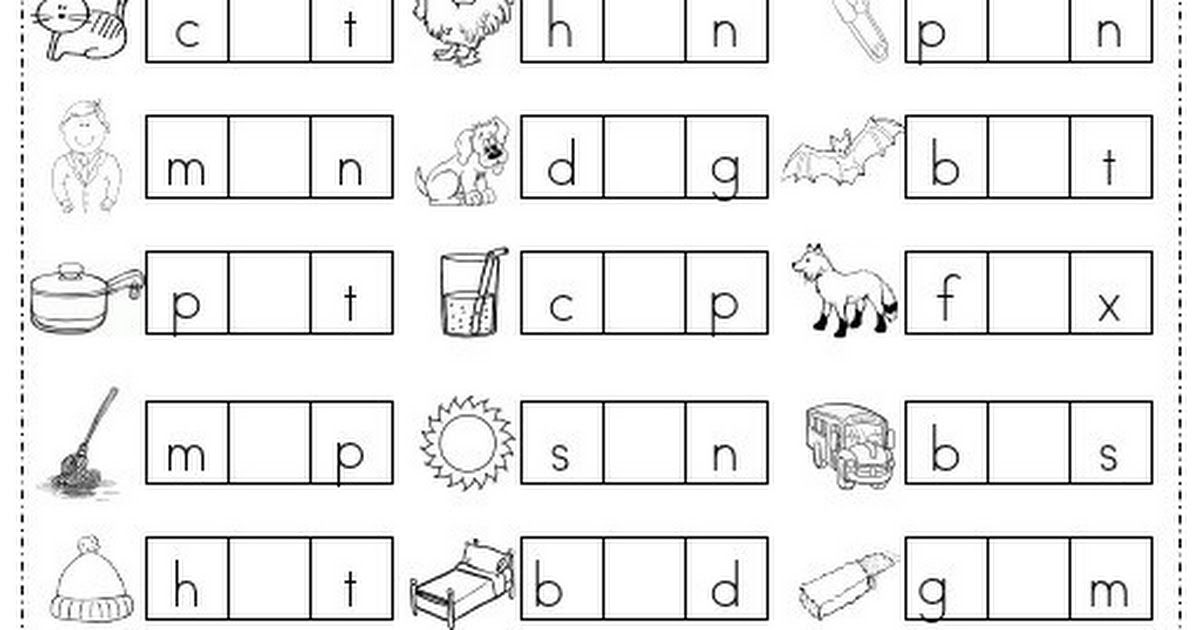 The child must guess what it is by asking leading questions that can only be answered with “yes” or “no”. For each correct answer, the leader extends one finger until the whole fist is opened, or the child can simply guess until the end, until the answers lead him to a clue.
The child must guess what it is by asking leading questions that can only be answered with “yes” or “no”. For each correct answer, the leader extends one finger until the whole fist is opened, or the child can simply guess until the end, until the answers lead him to a clue.
The same principle can be used to play theme games and guess, for example, animals, fairy-tale or cartoon characters, etc.
Educational games
The main goal of cognitive games is to teach a child something new, to expand his knowledge about the world around him, to replenish his vocabulary. These can be games about dinosaurs, space, the world around us, seasons and much more.
16. Orchard
Props : images of fruit and forest trees, cards with drawings of fruits.
The child needs to find exactly those trees that grow in the garden, and attach cards of the corresponding fruits to them. When choosing a tree, the child should pronounce its name and explain what helped him to recognize the tree (leaf shape, bark, fruits).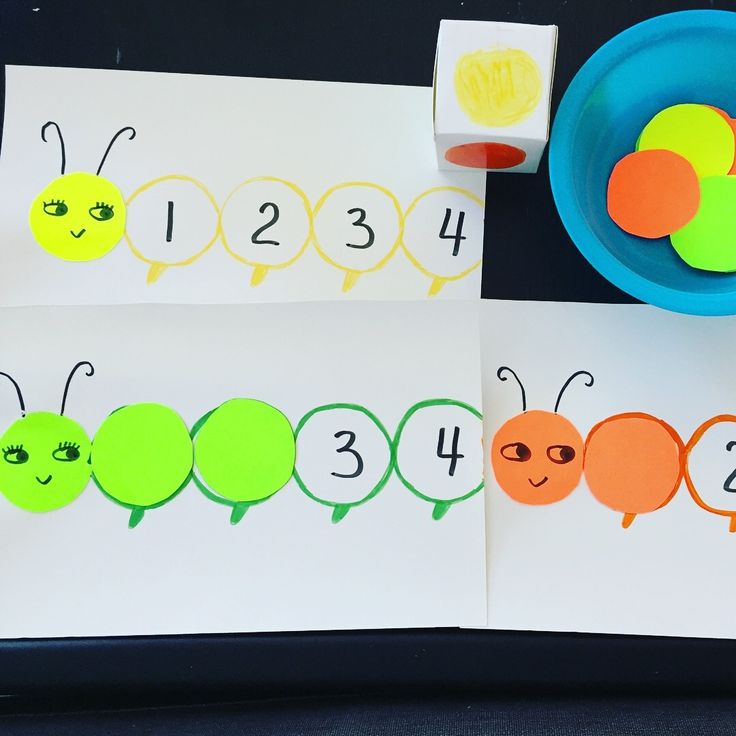 Parents should be told how fruit trees differ from forest trees, what fruits can be seen on certain types of trees, and so on.
Parents should be told how fruit trees differ from forest trees, what fruits can be seen on certain types of trees, and so on.
17. "Professions"
Children need to complete the poems:
The pilot lifts the blue sky... (airplane).
The roof is being painted before the children's eyes... (painters).
Every day a newspaper is brought to our house by... (postman).
I have been treating dolls since morning, today I… (nurse).
The facilitator should be told about each profession, you can ask the child what he knows about it.
Math games
Useful mathematical games will strengthen the knowledge of oral and written counting among five-year-olds. Such fun will be an excellent preparation for school.
18. "Missing number"
Requisite : cards with numbers from 0 to 9.
The host lines up the numbers in a row, first hiding one or several. The task of the child is simple - to find out which numbers are missing in the digital series. You can lay out all the numbers correctly, then ask the child to turn away and remove one card or swap several cards.
The task of the child is simple - to find out which numbers are missing in the digital series. You can lay out all the numbers correctly, then ask the child to turn away and remove one card or swap several cards.
19. “Big construction site”
Props : 2-3 toy trucks, bricks, Lego and other “building materials”.
Invite your child to play builders. The truck needs to take 12 cubes to the construction site. All of them will not fit into one car, the child needs to find a solution to the problem (use two cars, each of which will have six cubes; also ask the preschooler the question: “And if you take three cars, how many cubes will each of them have?”) .
In addition, you can perform various "building" tasks with the help of "Lego". For example, build a tower with seven blue blocks and three red blocks, then add three green blocks and subtract one blue block, etc.
Christmas games
New Year is the favorite holiday of all children.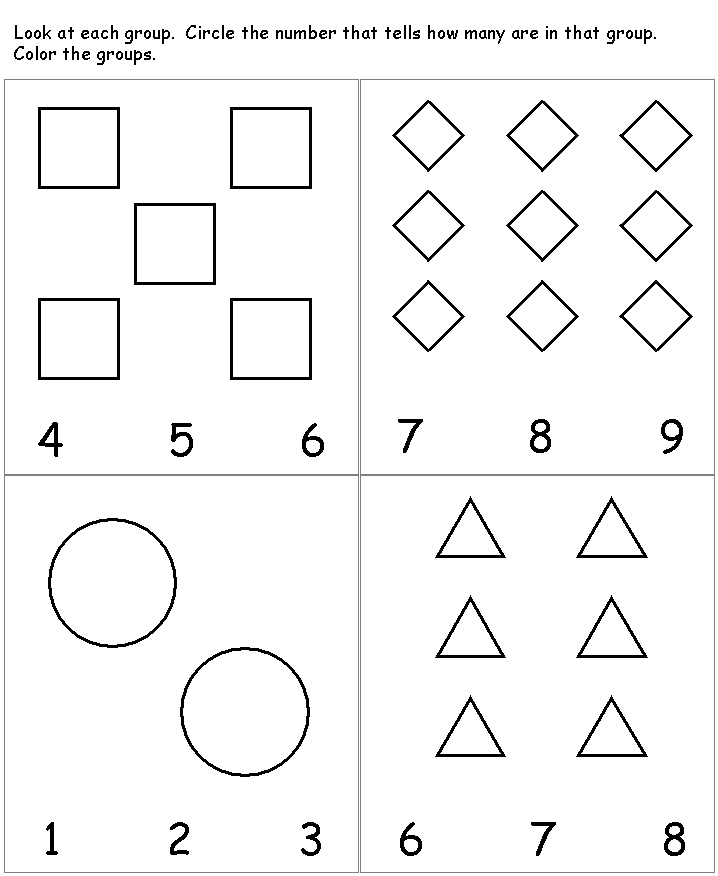 Every year, kids look forward to decorating a beautiful Christmas tree, hanging an advent calendar on the wall and counting down the days until Santa Claus arrives. But it is the parents, and not the fabulous red-nosed Grandfather, who give children a magical holiday. To make the New Year fun and memorable, you should carefully choose options for entertainment. It is recommended to alternate active fun and games at the table, dance competitions and quizzes.
Every year, kids look forward to decorating a beautiful Christmas tree, hanging an advent calendar on the wall and counting down the days until Santa Claus arrives. But it is the parents, and not the fabulous red-nosed Grandfather, who give children a magical holiday. To make the New Year fun and memorable, you should carefully choose options for entertainment. It is recommended to alternate active fun and games at the table, dance competitions and quizzes.
- Children's Christmas games: how to have fun on the most magical night of the year
20. "Dress up the Christmas tree"
Props : bag, party paraphernalia, clothing elements, funny accessories.
For this game, you can split into two teams, then there will be two "Christmas trees" that you need to dress up. One participant from each team is designated as a “Christmas tree”, all other players take turns blindly taking one item out of the bag and dress up their “New Year's beauty”.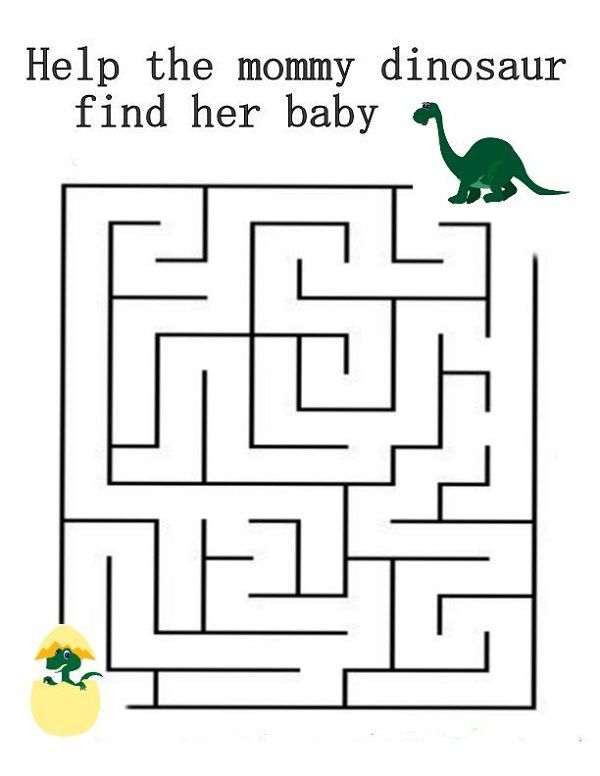
21. “Bring a snowball”
Props : cotton snowballs, spoons.
Guests are divided into two teams and lined up. Each first participant takes a spoon in his teeth, on which he puts a “snowball”. The player's task is to run to the Christmas tree and back as quickly as possible, without dropping his burden, and pass the baton to the next participant.
Speech therapy games
“No detectives. No giggles, but short and clear: fifks! - a phrase from the work of V. Dragunsky "Deniskin's story", which became an aphoristic joke. But in every joke, as you know, there is a fair amount of truth. Indeed, many preschool children have difficulty pronouncing certain letters, and in fact, beautiful clear speech is of great importance in adulthood. Parents can help their child practice pronunciation, but turn speech therapy exercises into an exciting pastime.
22. "Guess what sounds"
Phonemic games help preschoolers to distinguish sounds by ear and, as a result, pronounce them more correctly.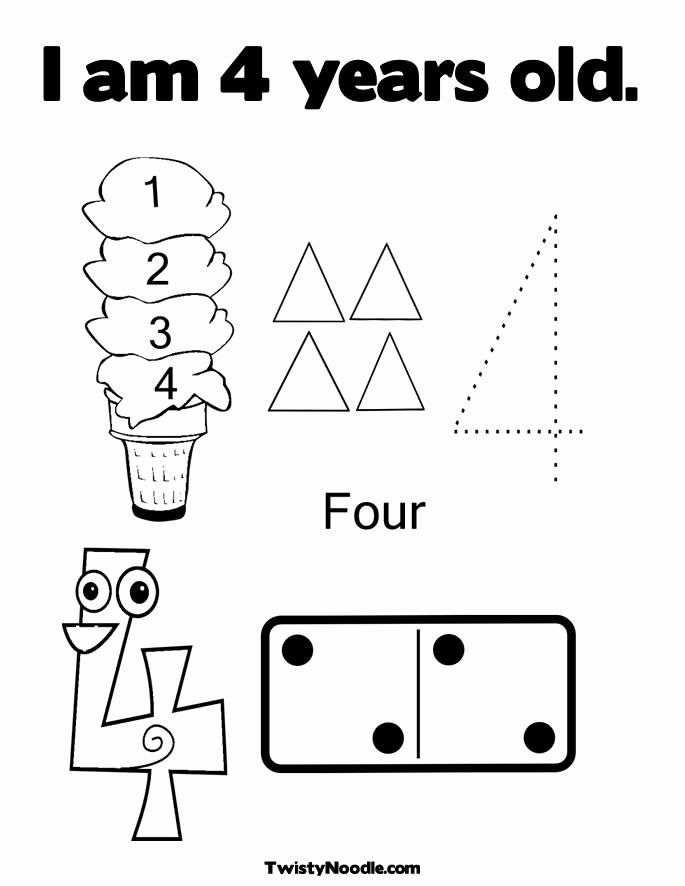 In addition, correct phonetic perception affects the level of understanding of what was said.
In addition, correct phonetic perception affects the level of understanding of what was said.
The simplest version of the phonemic game is to choose a few objects that make sounds (squeaker toy, tambourine, pot lids, etc.). The child closes his eyes, and the parent uses one of these items, after which the kid must guess it.
23. “Feed the kids”
Requisite : an image of the faces of a boy and a girl with slits in place of the mouth, cards with images of products and other items.
Word games, as a rule, are aimed specifically at the development and correction of speech. The game "Feed the kids" also develops thinking. There are several options:
- The host calls the letter, and the child must “feed” the drawn boy and girl with food that begins with it (for example, the letter “P”, products: fish, rice, radish).
- The host says: "Feed Masha with bakery products, and Misha with meat products." The child chooses products and at the same time says: "Masha ate a sandwich, and Misha ate a barbecue.
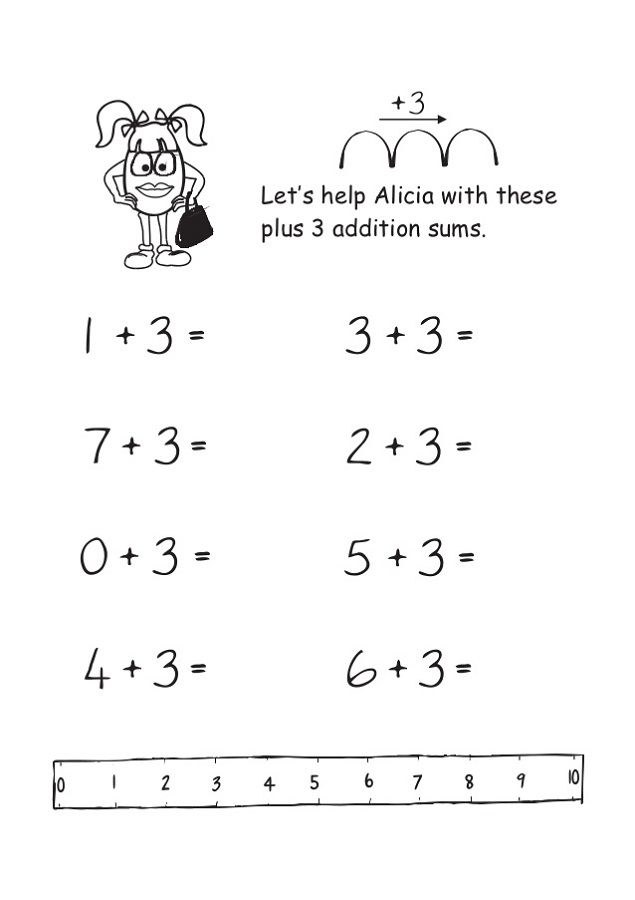 "
"
The facilitator can also name the products (you can come up with a small poem from the names of the dishes), and the child must determine by ear which of the named products are among the cards given to him.
24. Capricious doll
The game is aimed at developing speech, gives children an understanding of what antonyms and synonyms are. The host invites the children to play with a capricious doll, which does everything the other way around, and even teases. The host says: “Doll, go to sleep, it’s already night outside the window!”, And the child answers for the doll: “No, it’s day outside the window!”; presenter: "Cover, otherwise it's cold", puppet: "No, it's hot now!"
Attention games
Games like Spot the Differences, tasks where you need to remember the location of cards, search for errors and inconsistencies are excellent for developing attention.
25. "Strange Beasts"
The leader reads the story, the children listen attentively.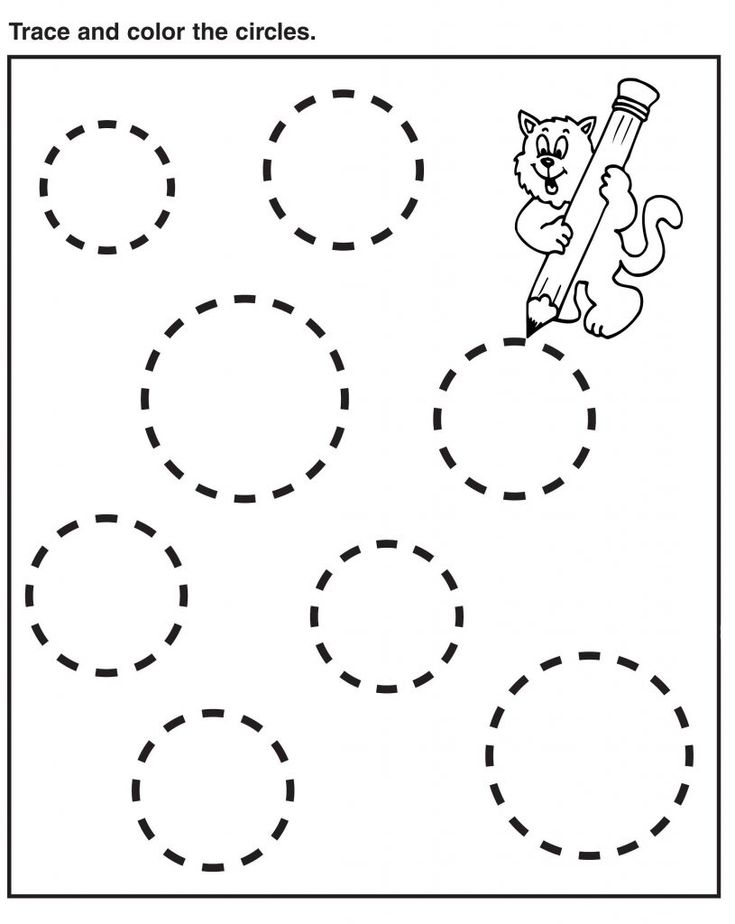 As soon as the child notices inaccuracies in the narration, he immediately claps his hands.
As soon as the child notices inaccuracies in the narration, he immediately claps his hands.
Sample story:
Once upon a hot winter, a hare with a long fluffy tail and short ears decided to build a hibernation den. He began to dig a deep hole and frightened off a fox, which was just nesting in a tree. Suddenly, a blue wolf jumped out at the hare, but the hare was not at a loss and decided to swallow it, then he grunted in fright and disappeared into the forest thicket. Then the hare picked up spruce branches so that he could sleep softly on them in the den. And all around - beauty: flowers bloom, butterflies fly, berries ripen, in a word - winter!
26. “Repeat the route”
The child is blindfolded and guided along an easy route. The task of the participant is to repeat this path as accurately as possible. The facilitator can give verbal prompts: "Three steps forward, turn right, four steps forward, turn left, etc." In the future, the exercise is complicated by additional actions or obstacles.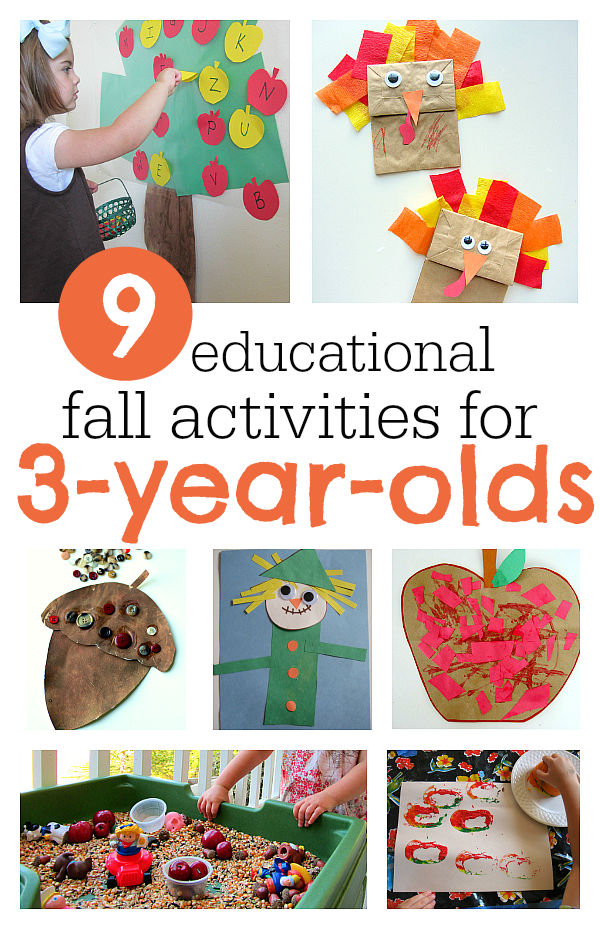 “Three steps forward, now step over the obstacle. One small step back, turn around and take two steps forward.” You can also give deceptive hints - for example, the leader says: "Turn right", although there were no turns on the route to be repeated. The child should not fall for this bait.
“Three steps forward, now step over the obstacle. One small step back, turn around and take two steps forward.” You can also give deceptive hints - for example, the leader says: "Turn right", although there were no turns on the route to be repeated. The child should not fall for this bait.
Role play
Story games are of great importance in the development of five-year-olds, because it is through the game that children learn to interact in society. “Mothers and Daughters” shows the traditional family model, the hospital game illustrates the relationship between the patient and the doctor, teaches the rules of behavior in the clinic, and the kindergarten game can tell parents a lot about what happens to the child in the kindergarten group.
What kind of theatrical games can be offered to a five-year-old? Lots of options!
27. "Bunny's Birthday"
Props : toys, dishes (toy or disposable).
Invite the child to imagine that the Bunny (or other toy) has a birthday today.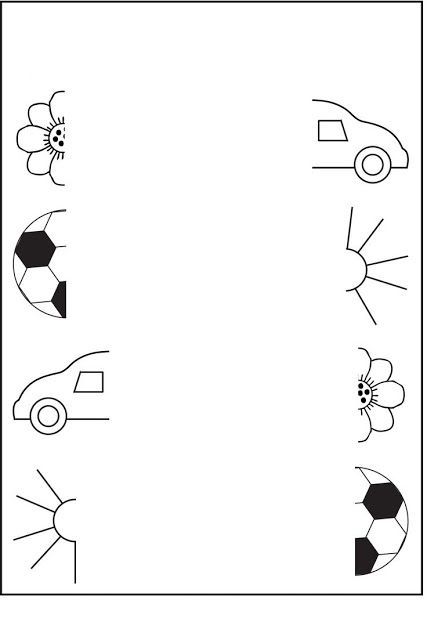 He invited his friends, and now Bunny needs to set a table for them. Guests also need to follow the rules of etiquette during the feast and prepare a gift and congratulations for Bunny.
He invited his friends, and now Bunny needs to set a table for them. Guests also need to follow the rules of etiquette during the feast and prepare a gift and congratulations for Bunny.
During this game, preschoolers will learn the rules of courtesy, learn how to behave at a party and set the table, as well as expand their vocabulary (“name day”, “serving”, “service”, “meal” and others).
28. "Flight into space"
Props : illustrations of our planet from space, other planets and celestial bodies.
Almost every preschooler would be happy with the idea of going on a space trip. But in order to become an astronaut, you need to undergo a medical examination, pass sports standards and learn many important points (what is gravity, how astronauts eat, etc.). During the "space flight" the parent or leader talks about the planets, celestial bodies, galaxies. It will be even more interesting if the astronauts meet with aliens - invite the child to establish contact with the inhabitants of Mars or Venus and tell them about the Earth.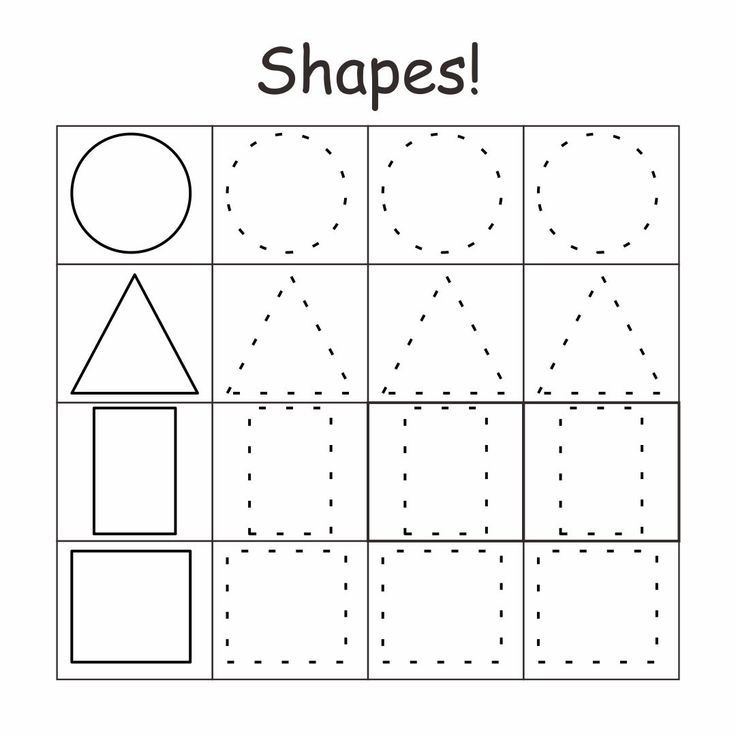
Outdoor games for children 5 years old
Every parent needs to know not only what to play at home with a 5-year-old child, but also how to entertain their child on the street. It is not enough just to bring the kids to the playground and leave them to themselves, you need to offer them examples of children's games, tell the rules and maybe even take part in children's fun.
Some children's games at the age of 5 are considered timeless classics and never go out of style. You can offer children entertainment from your childhood: "Classics", "Rezinochka", "Bouncer", "Hide and Seek", "Cossacks-robbers" and others. And you can also learn something new, parents are advised not to limit themselves to options from the past, but to regularly look for original ideas for games with a child of 5 years old.
- Children's outdoor play: 17 replacements for shooters, fighting games and arcades
29. "Flight of the owl"
Parent/facilitator - "owl", child/children - "mice".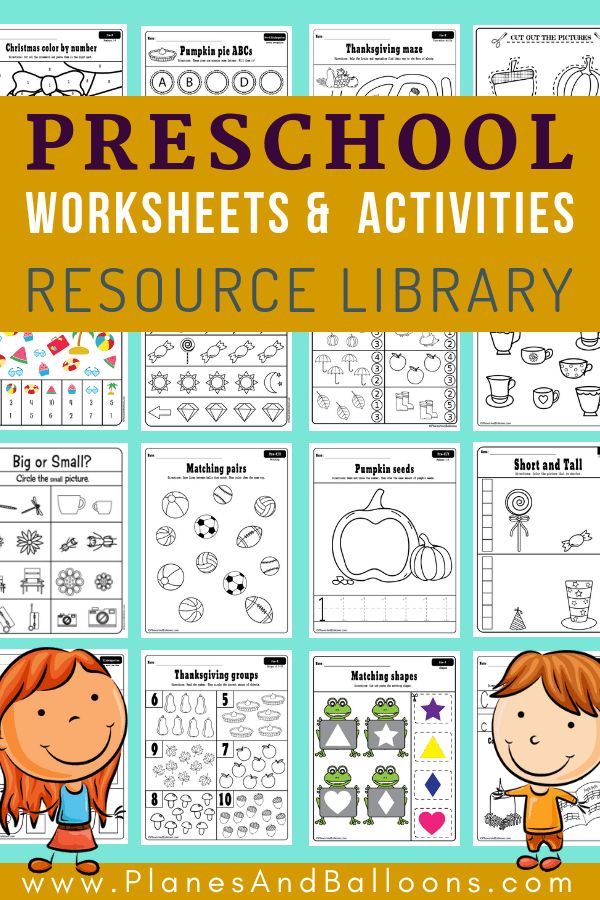 When the host says "Day", the mice run and frolic, but as soon as the command "Night" sounds, everyone should freeze in random poses. At night, an owl comes out to hunt, the task of mice is not to move or make any sounds. To make the game more interesting, the owl may try to make the frozen mice laugh.
When the host says "Day", the mice run and frolic, but as soon as the command "Night" sounds, everyone should freeze in random poses. At night, an owl comes out to hunt, the task of mice is not to move or make any sounds. To make the game more interesting, the owl may try to make the frozen mice laugh.
30. "Museum of wildlife"
Props : cards with the inscriptions "Grass", "Earth", "Tree", etc.
Invite the child to create a museum of wildlife and prepare interesting exhibits for this. The search for exhibits will be an exciting activity, during which the parent will tell the child a lot of interesting things about the world around them. When the exhibits are found, they need to be placed in the museum and put next to the corresponding card - this task is especially useful for five-year-olds, because usually at this age children learn to read.
Tips for parents: words should be written in large block letters.
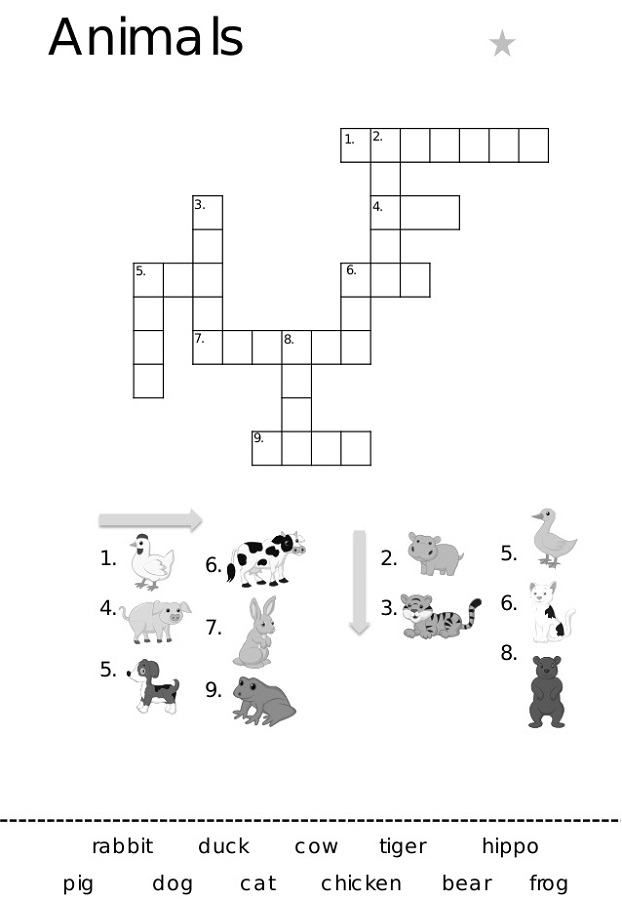
Learn more

